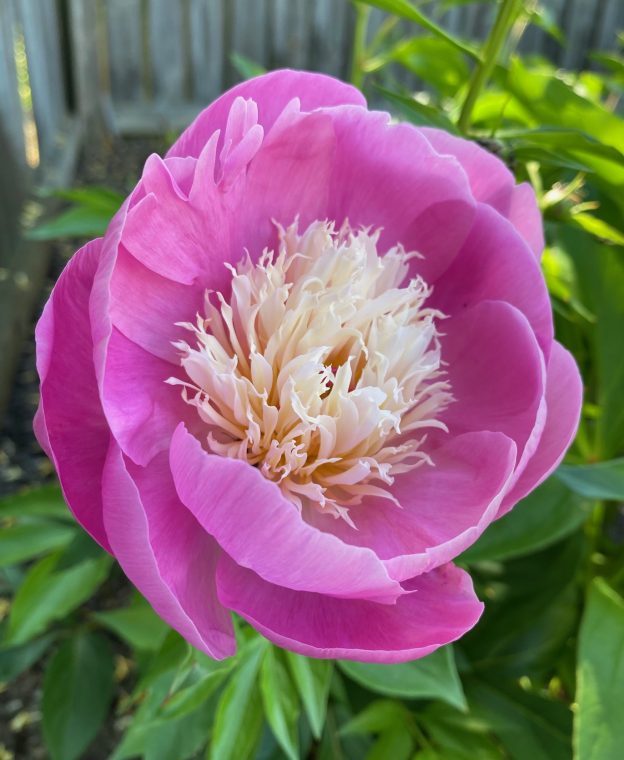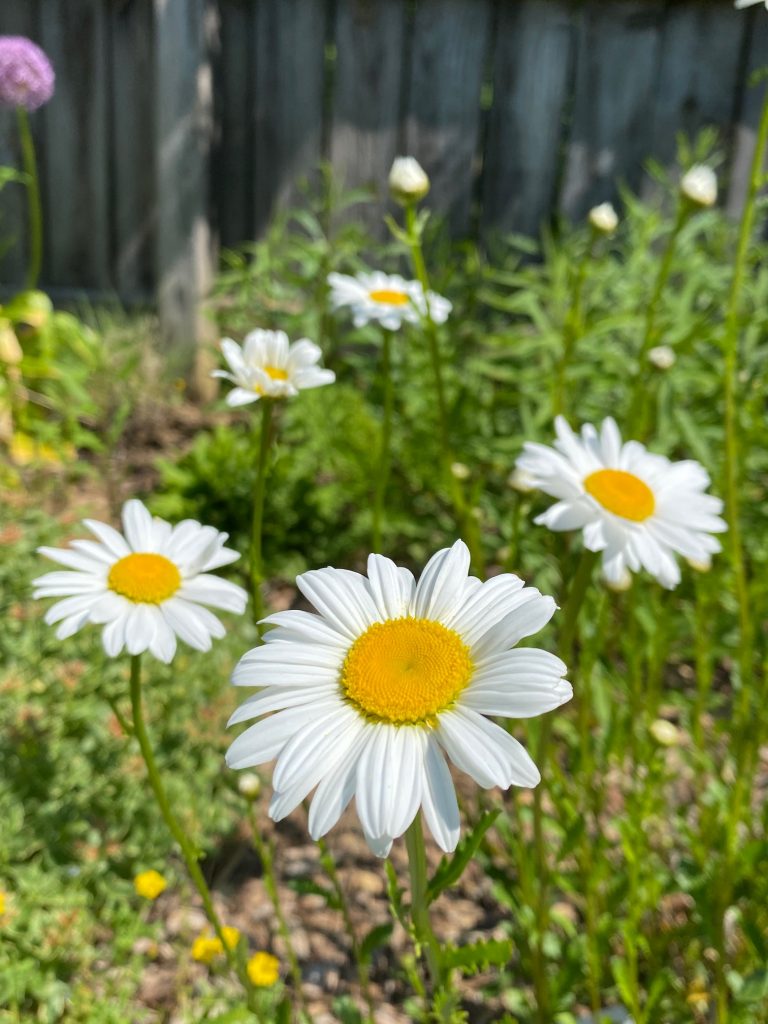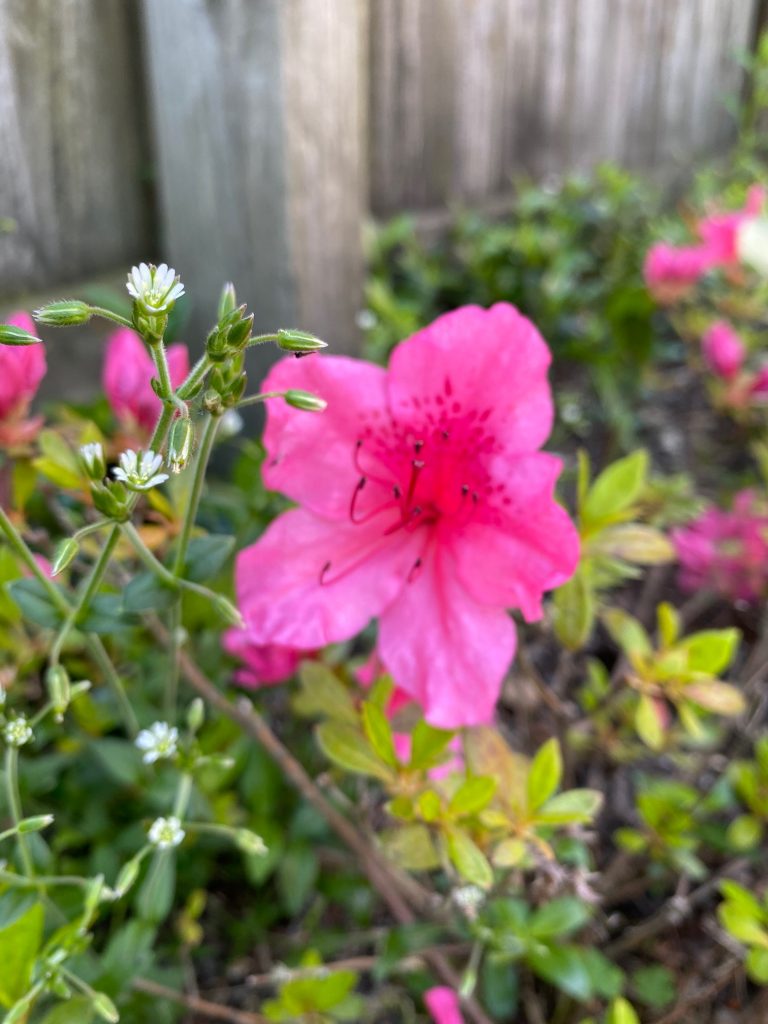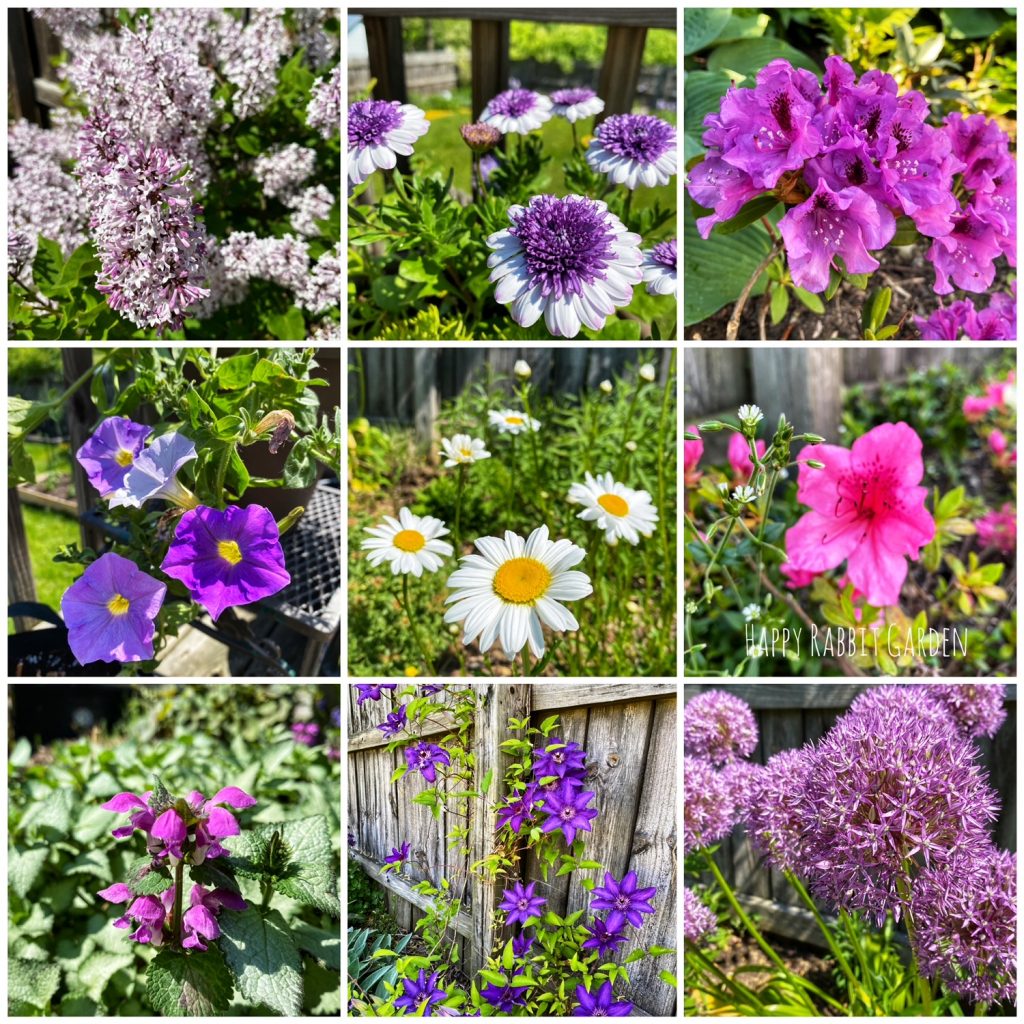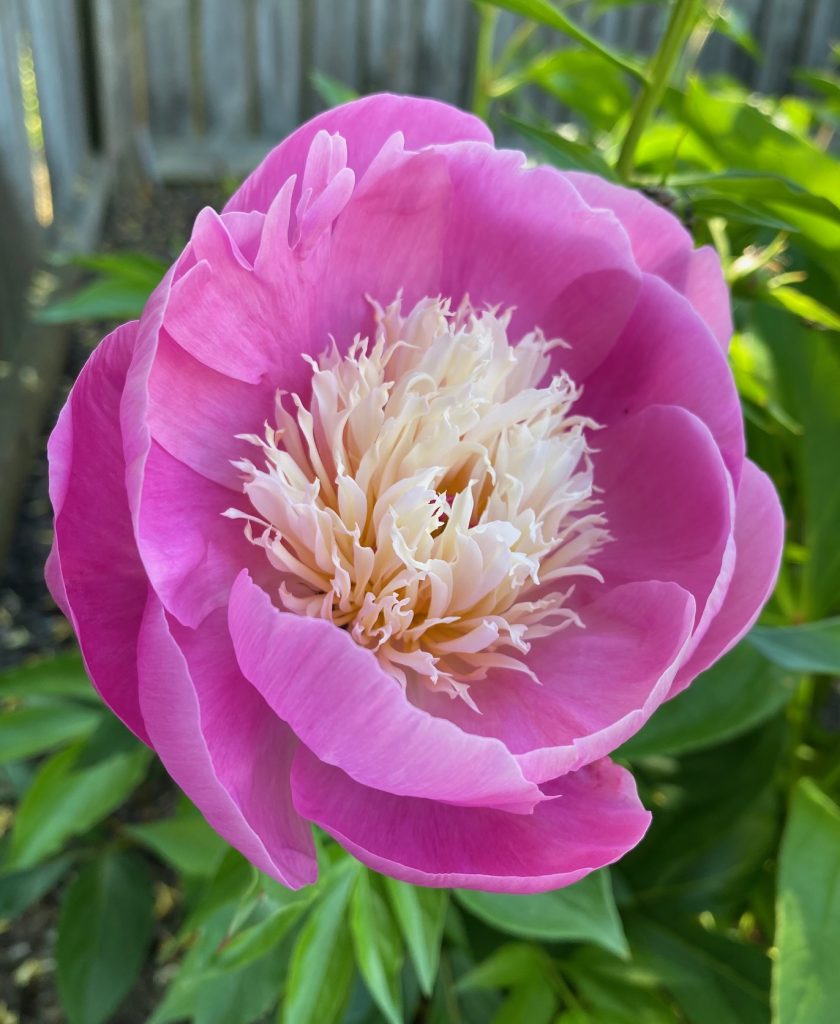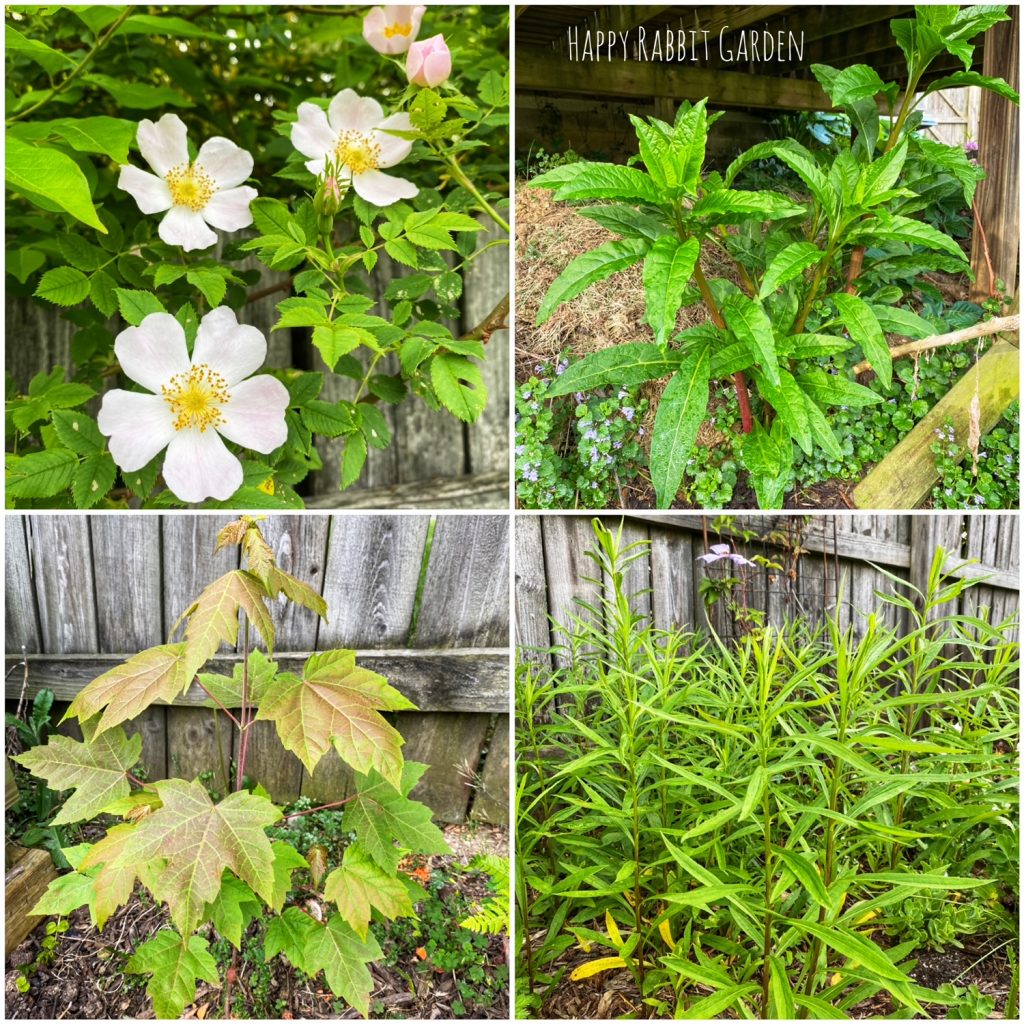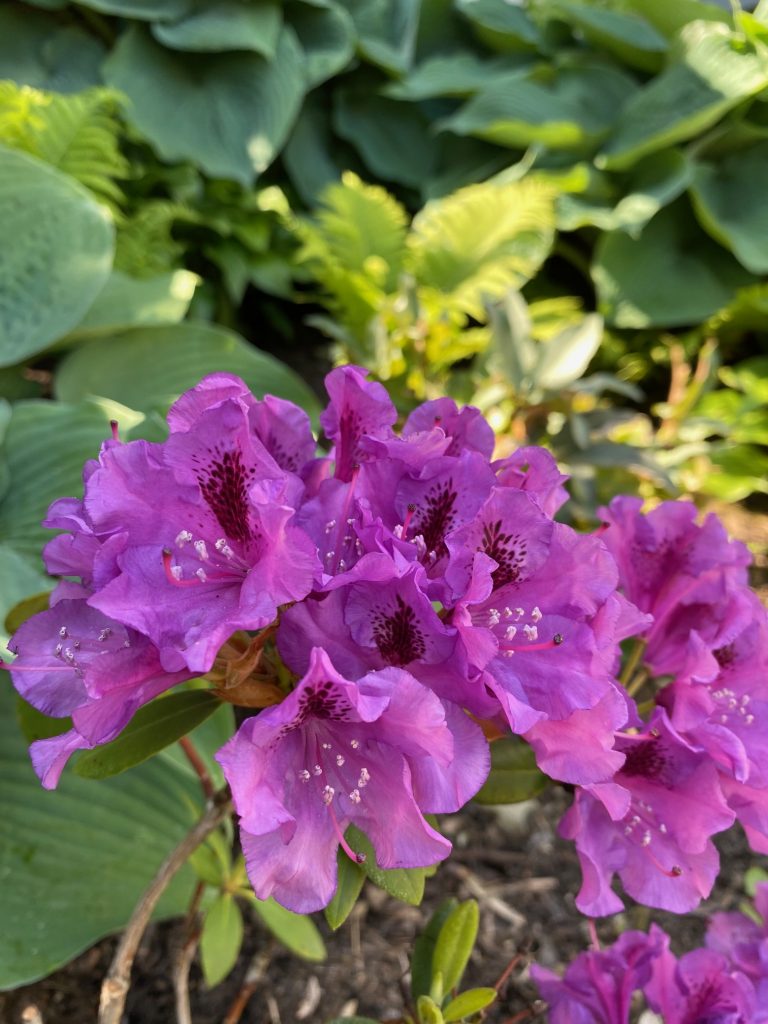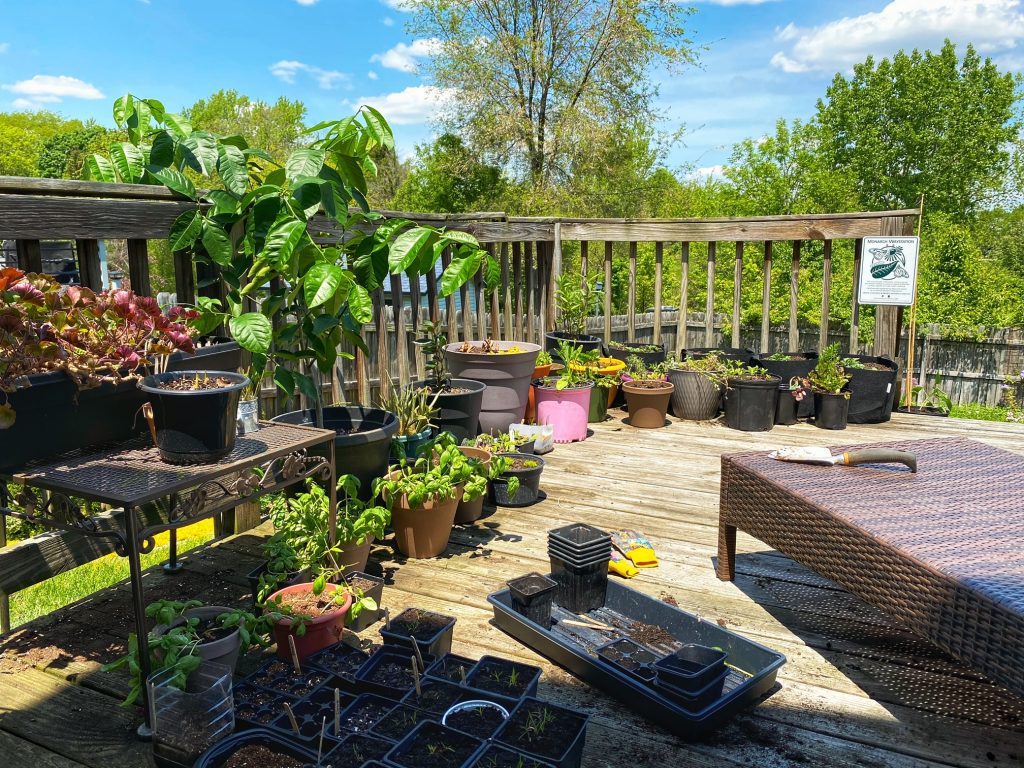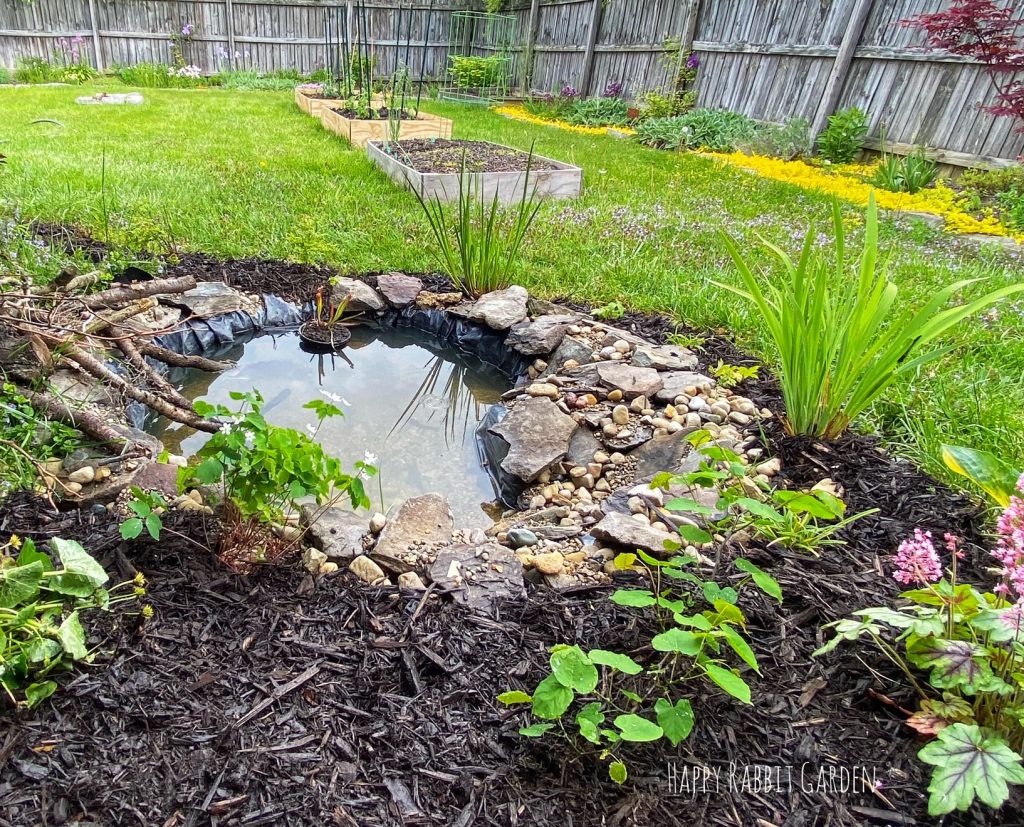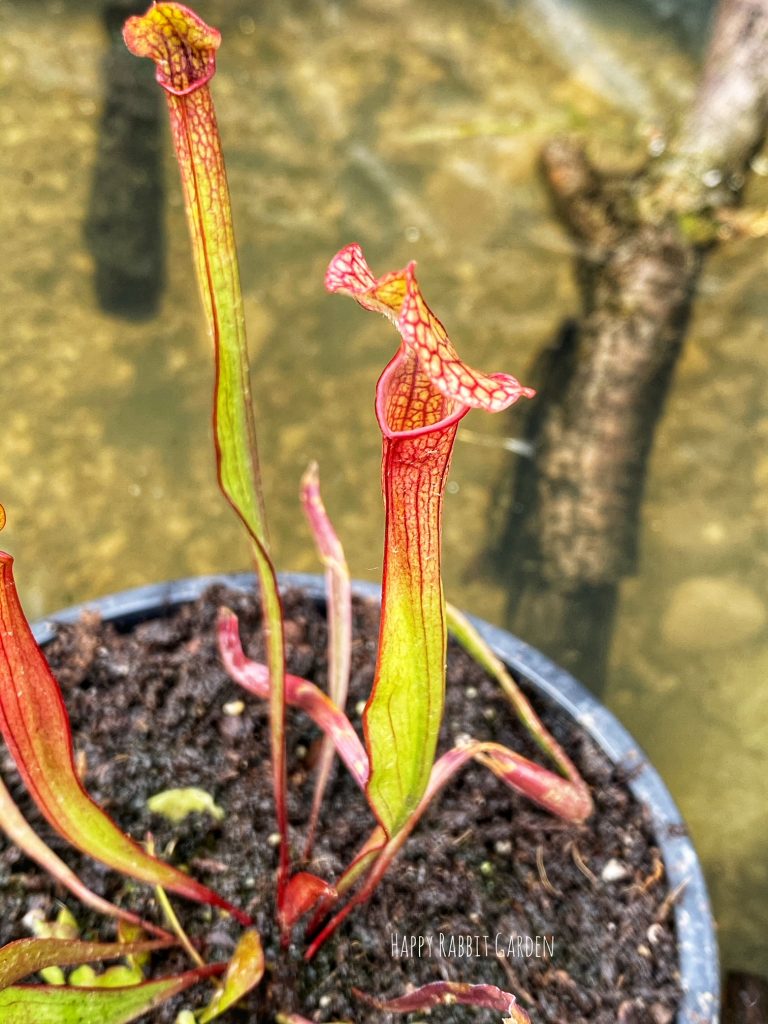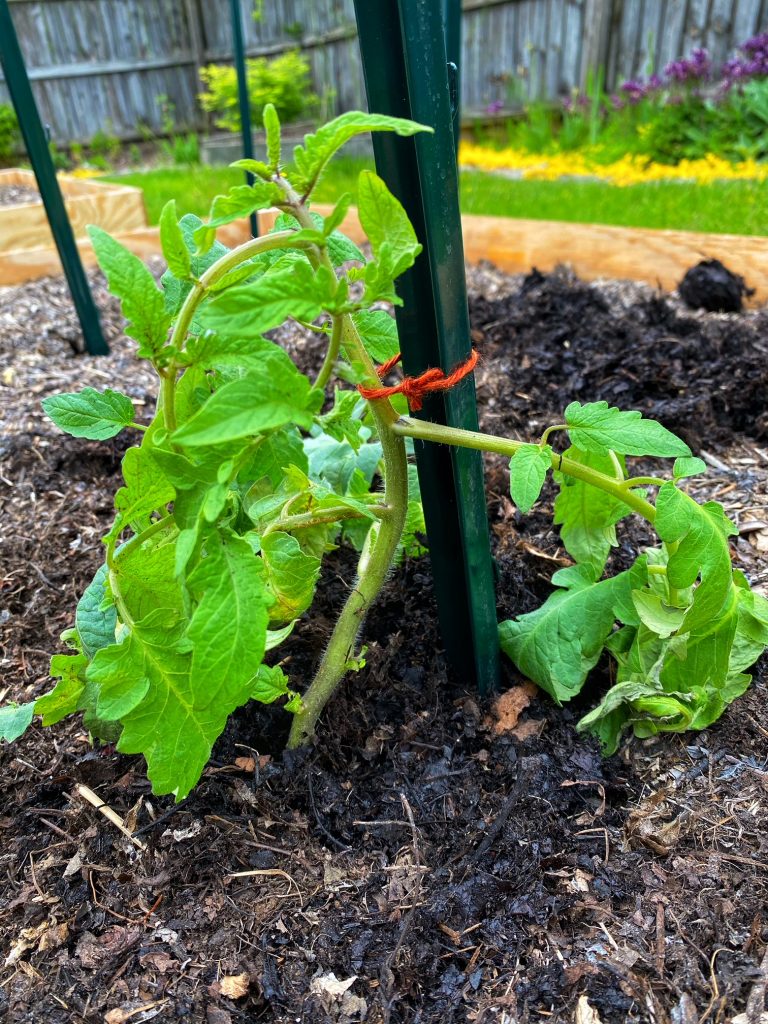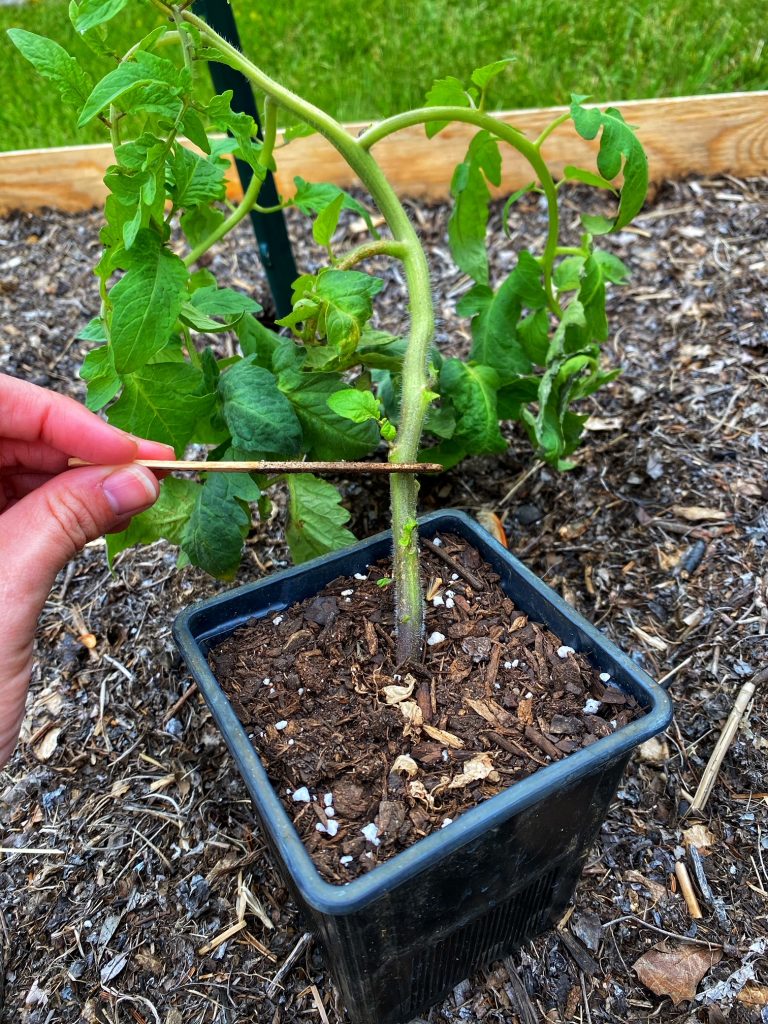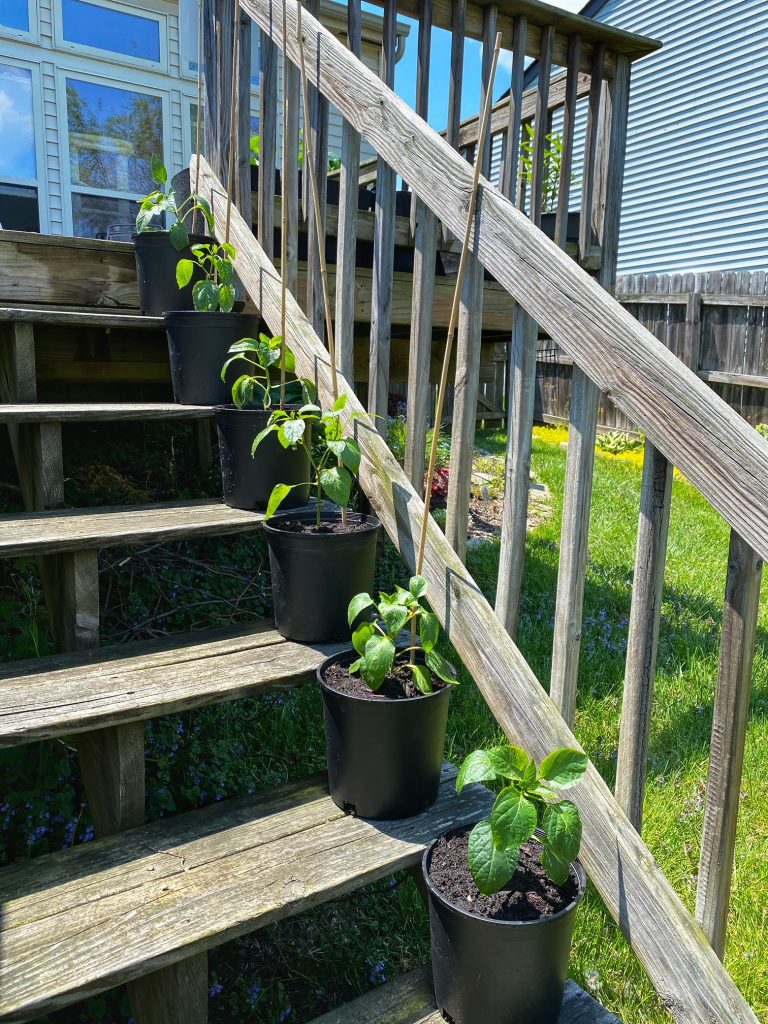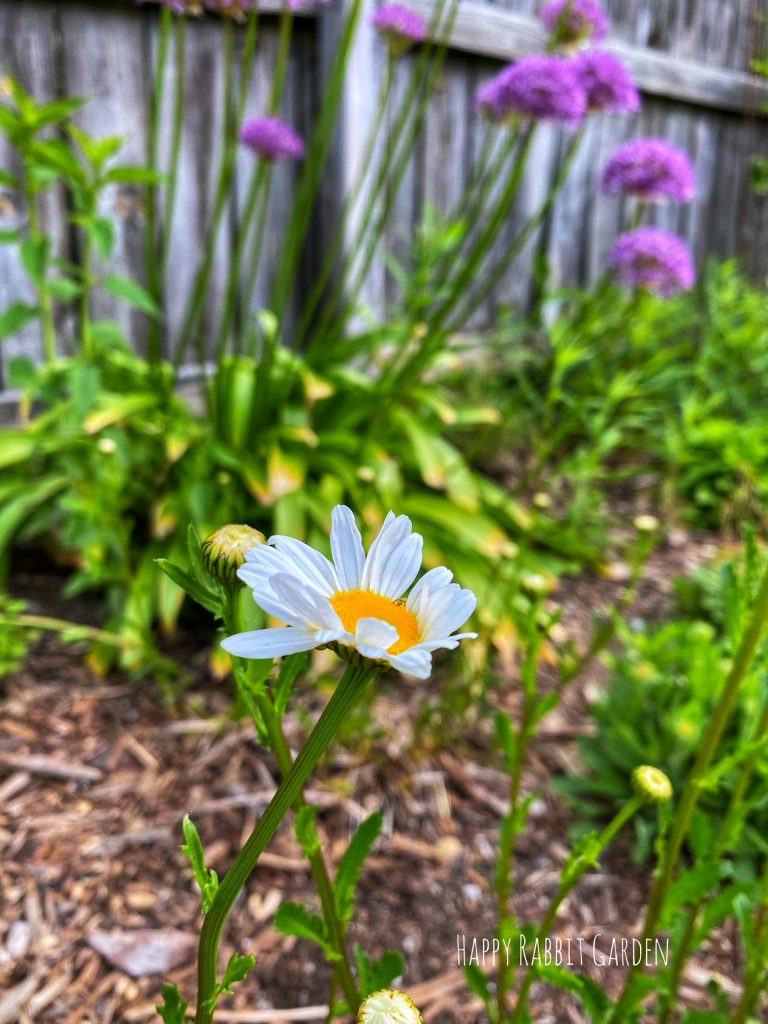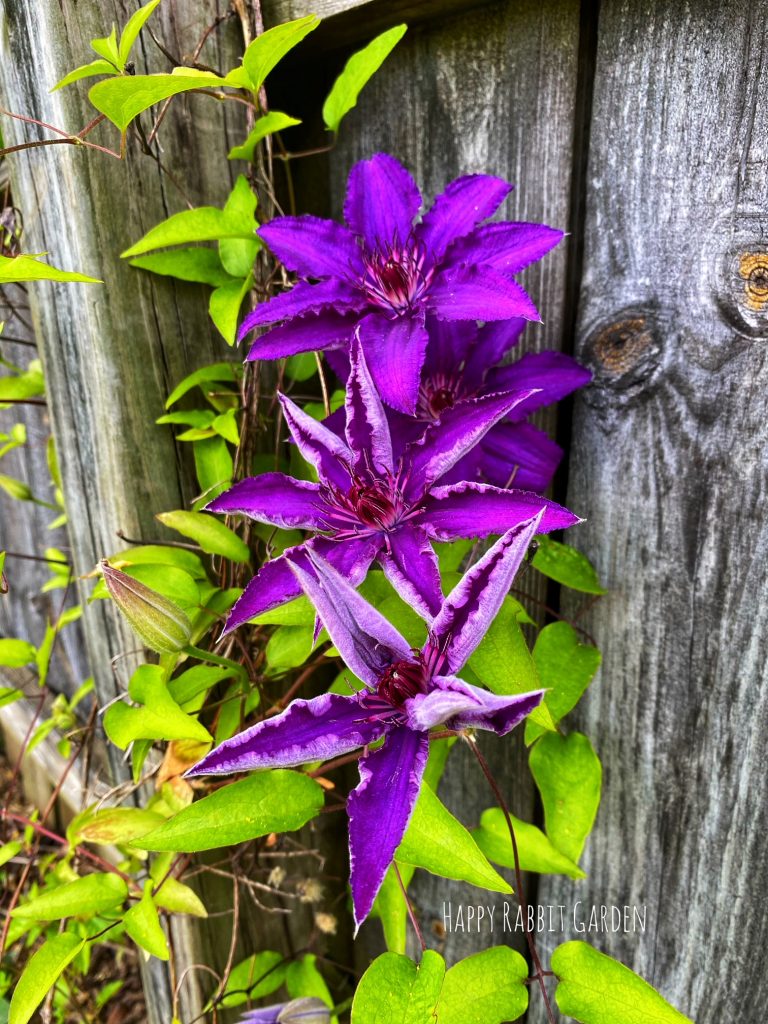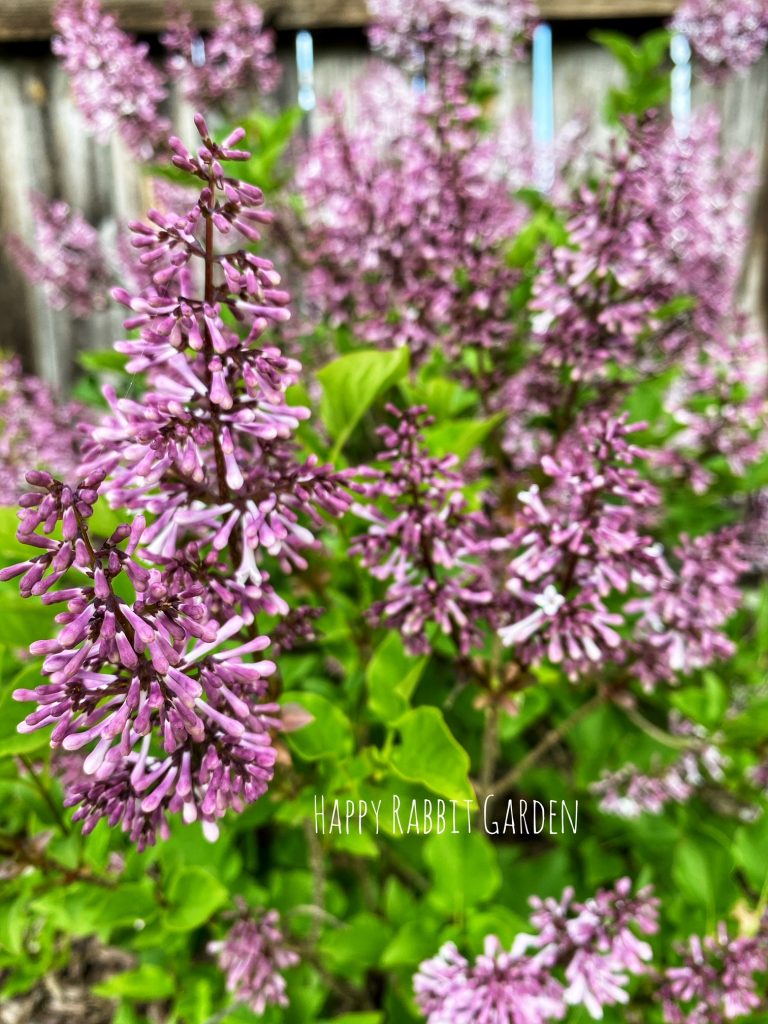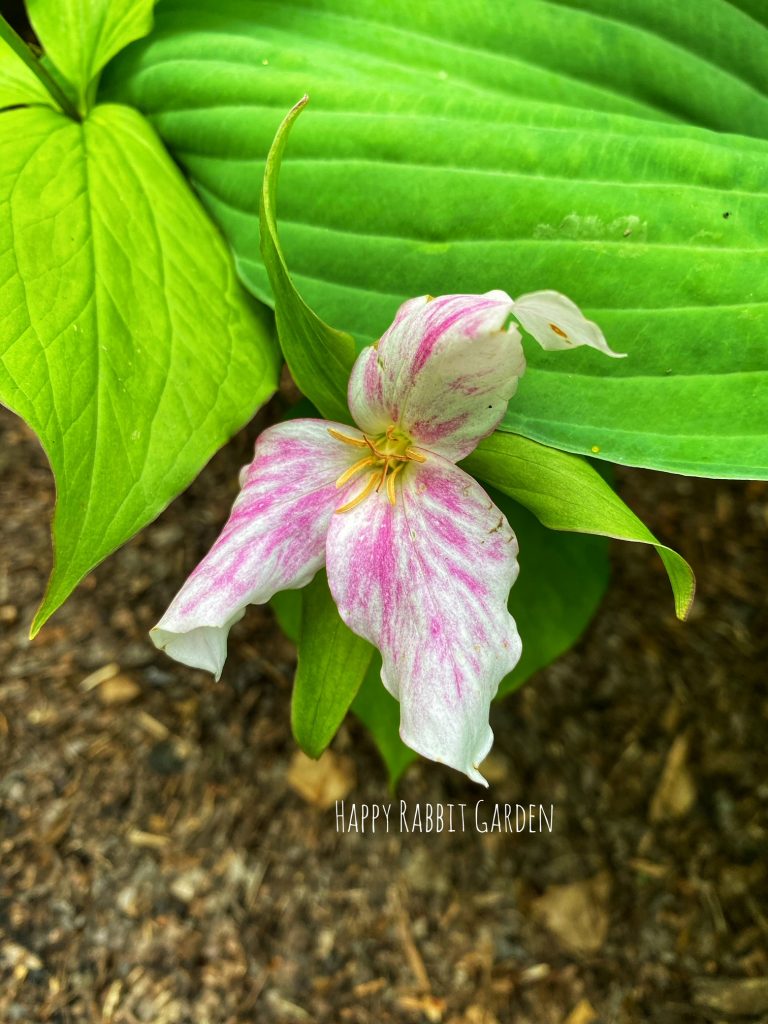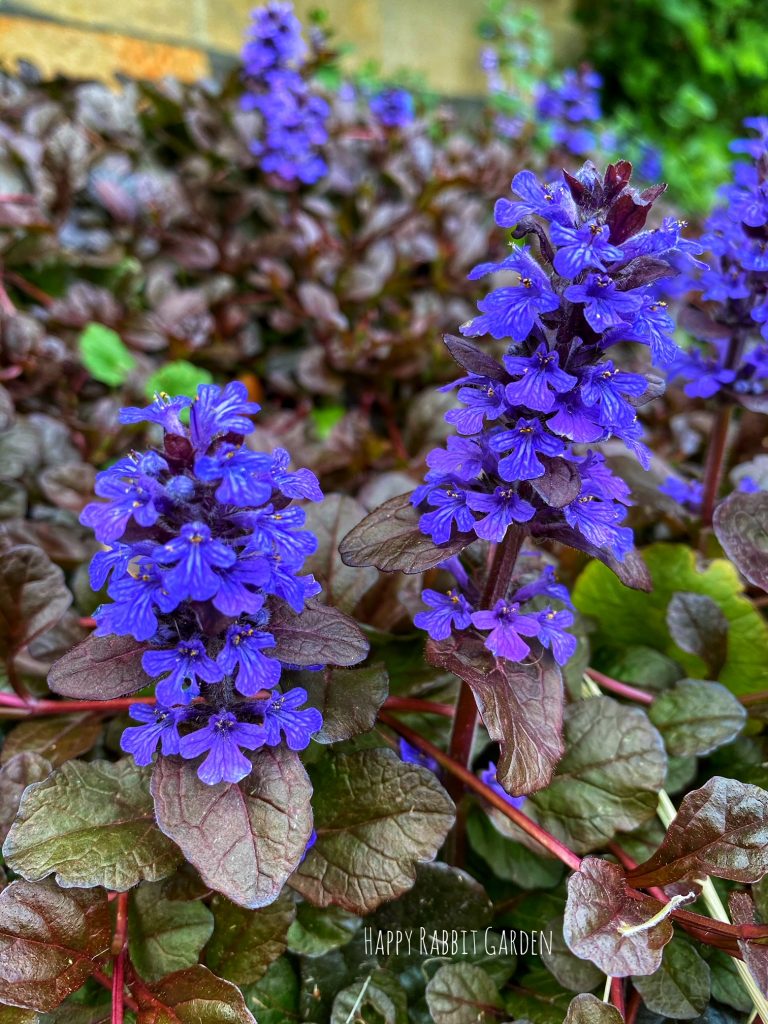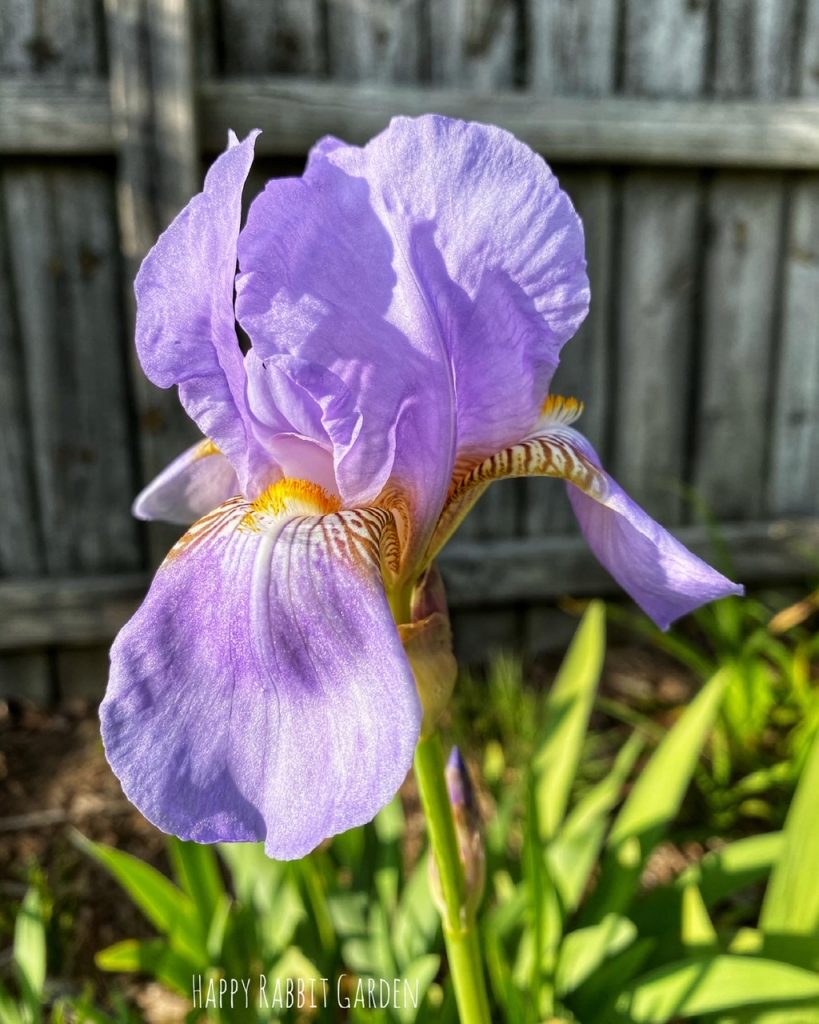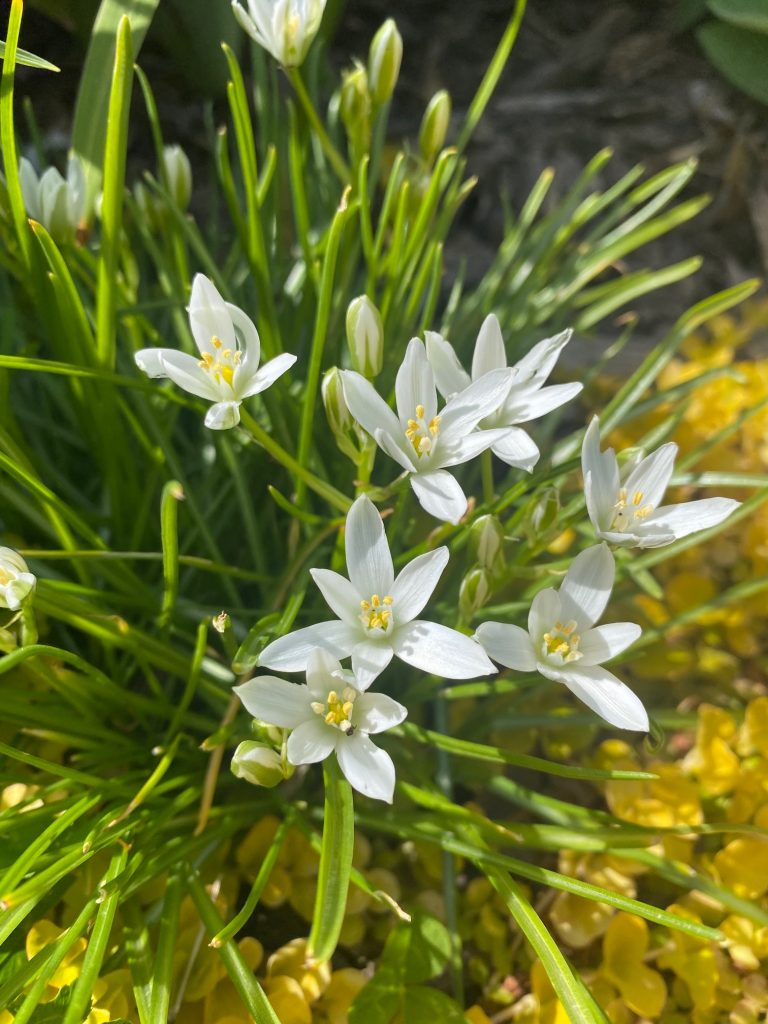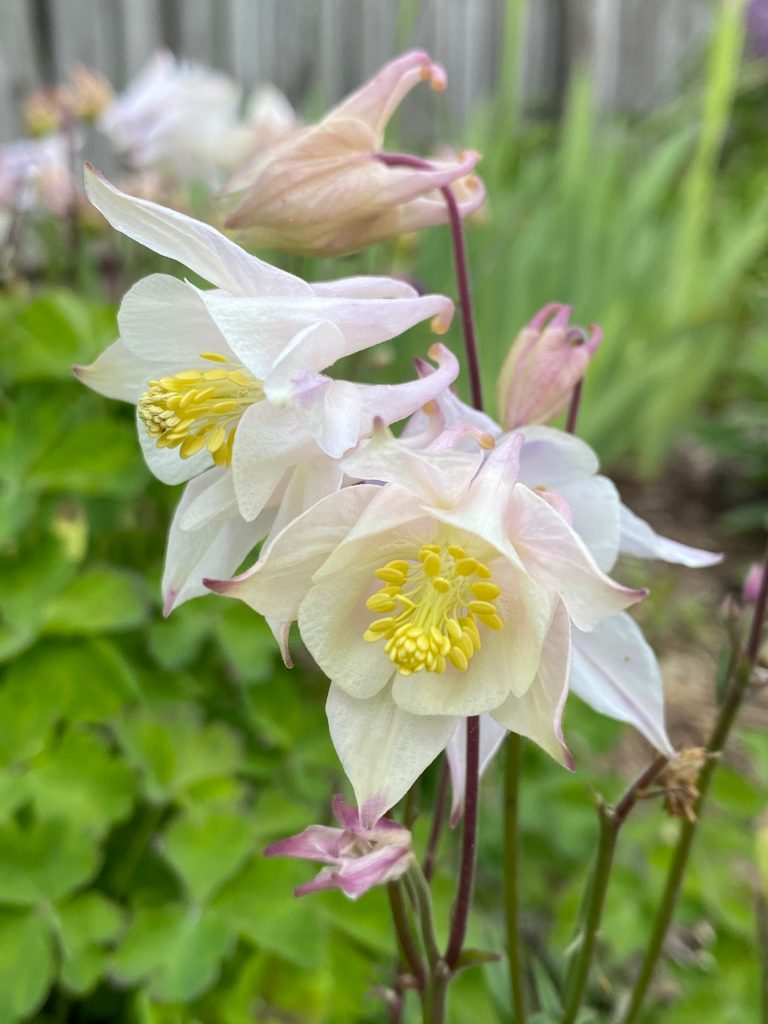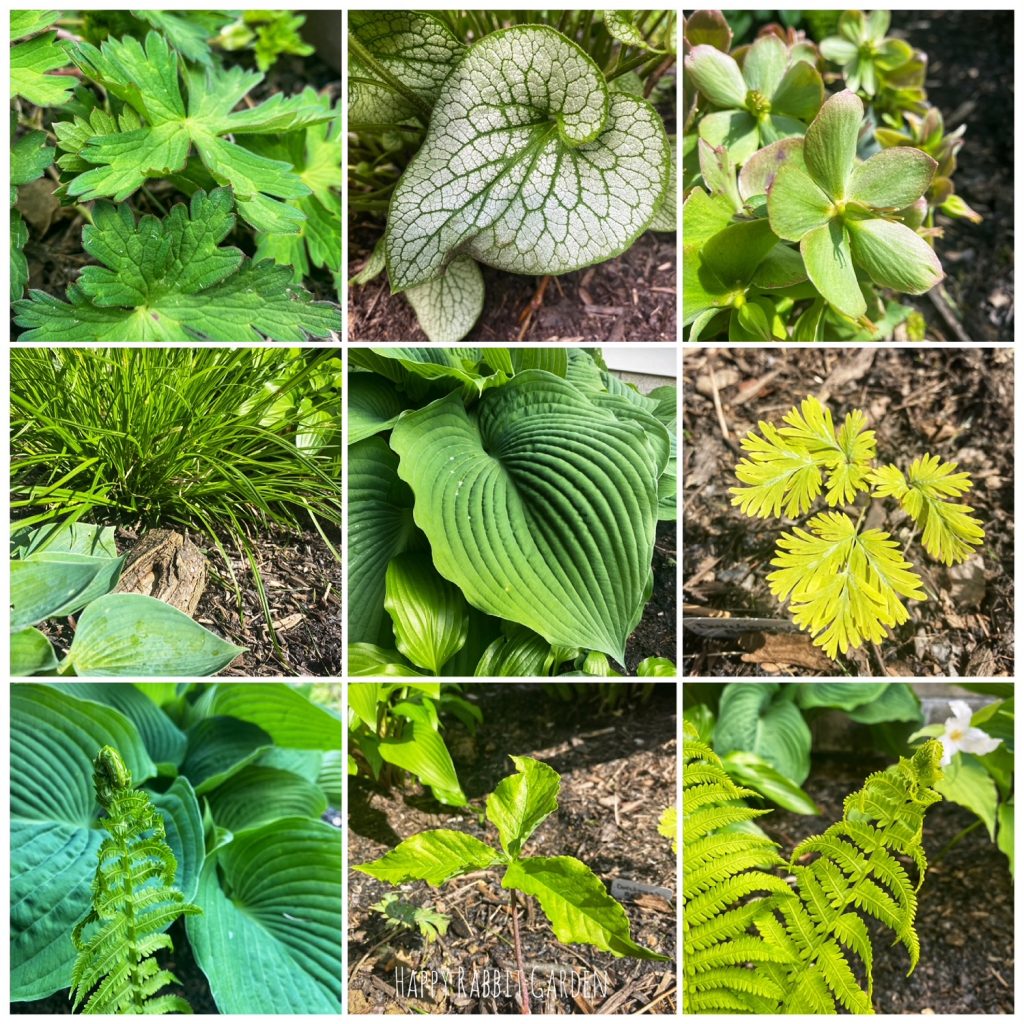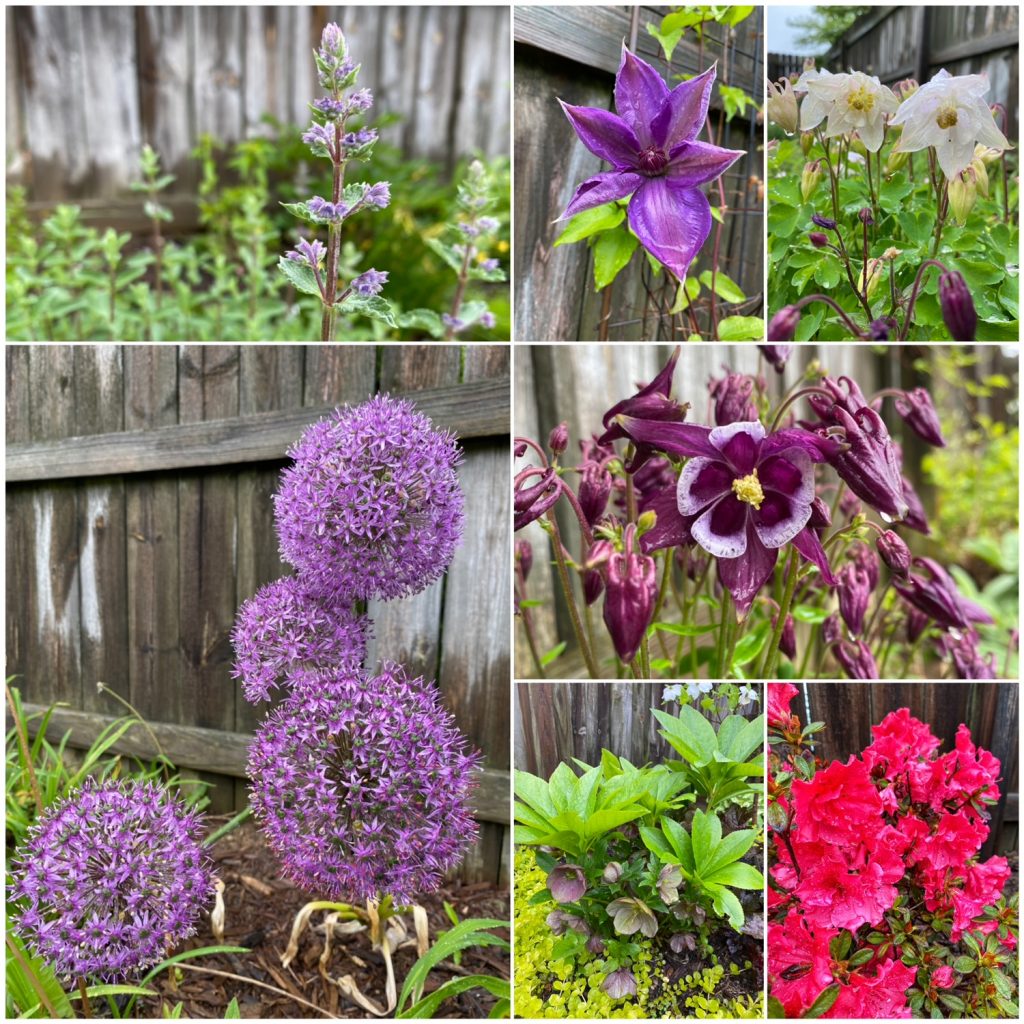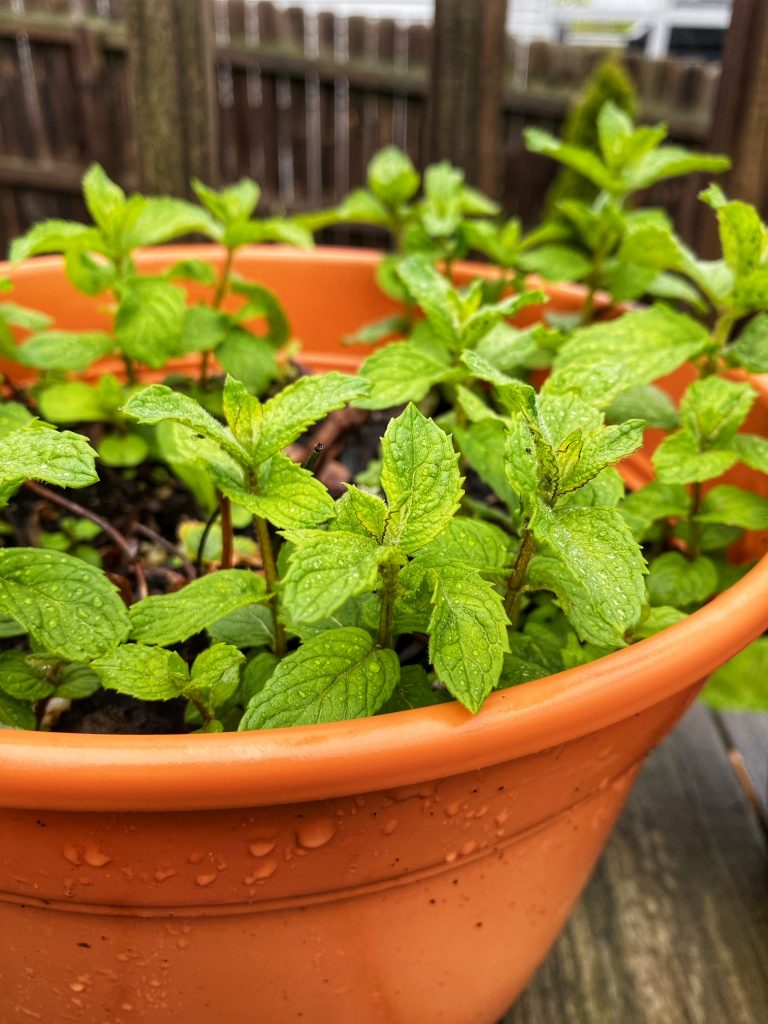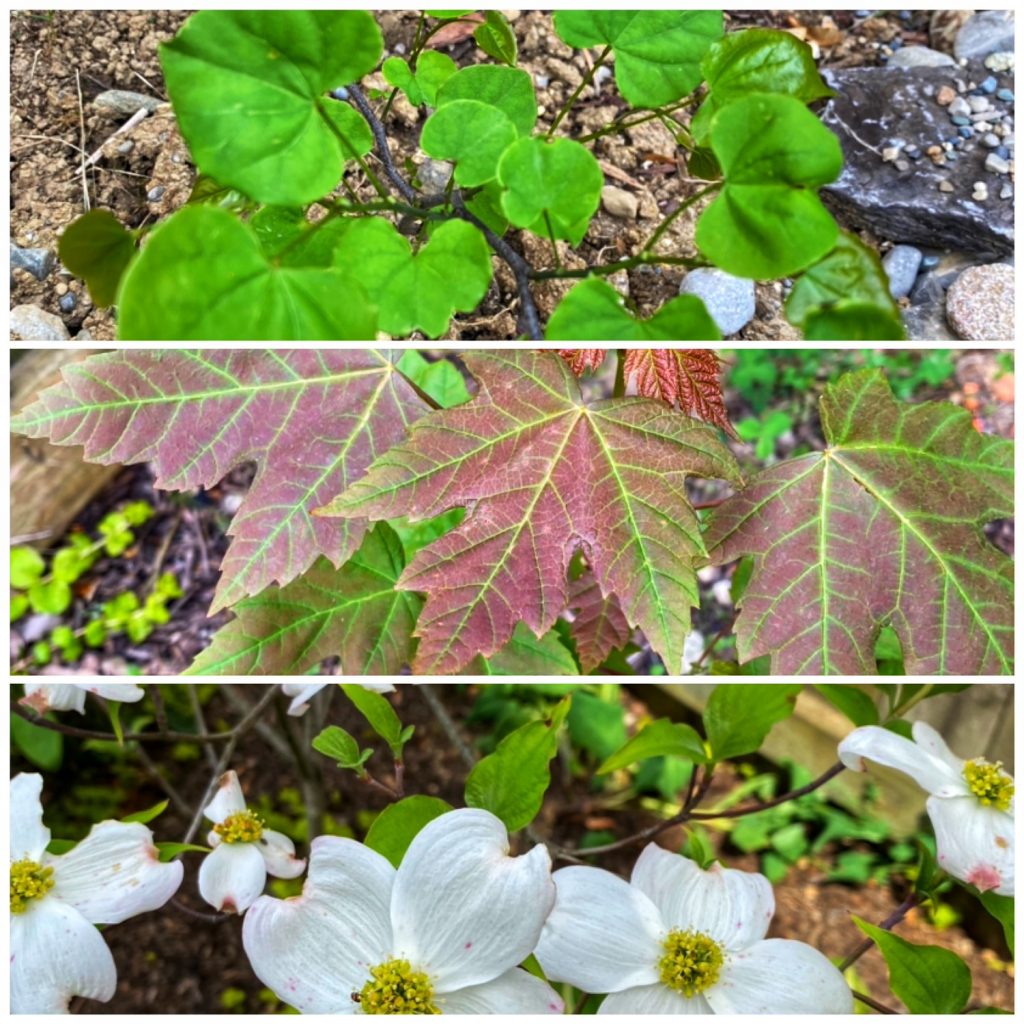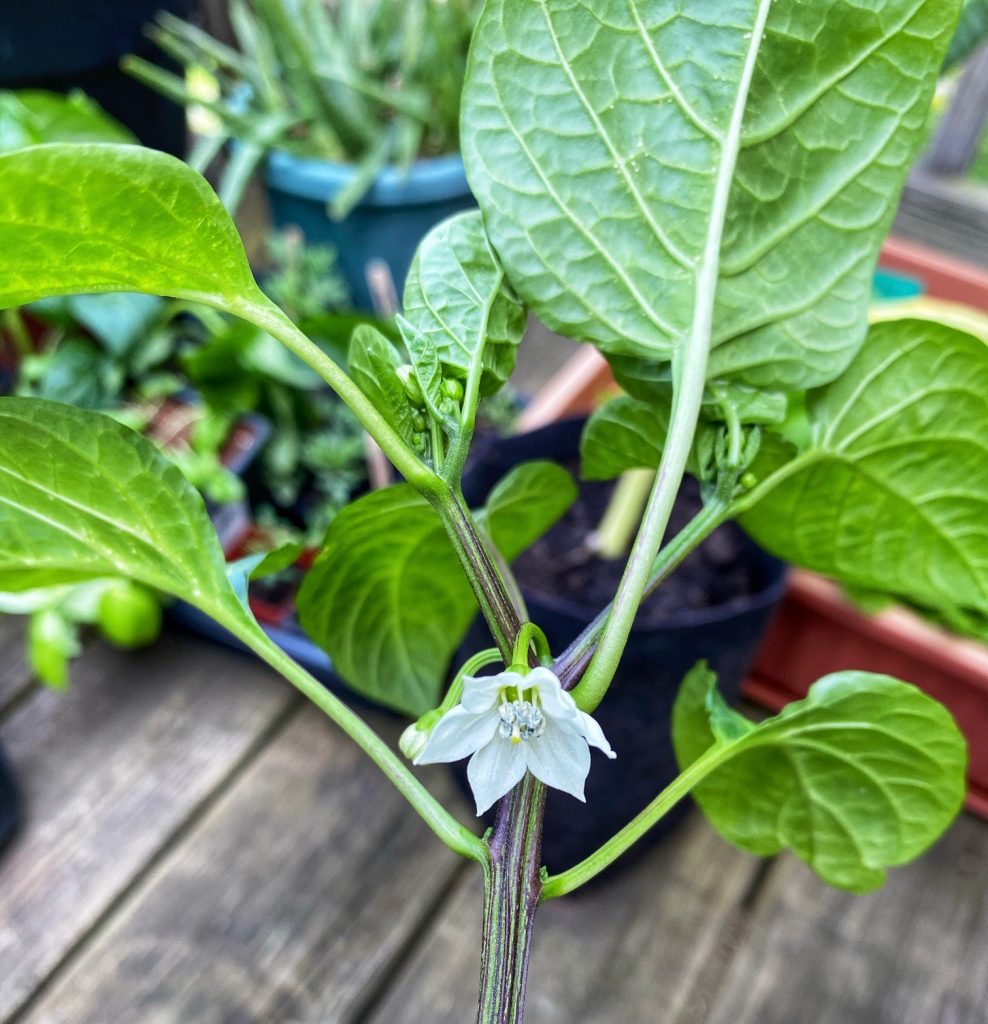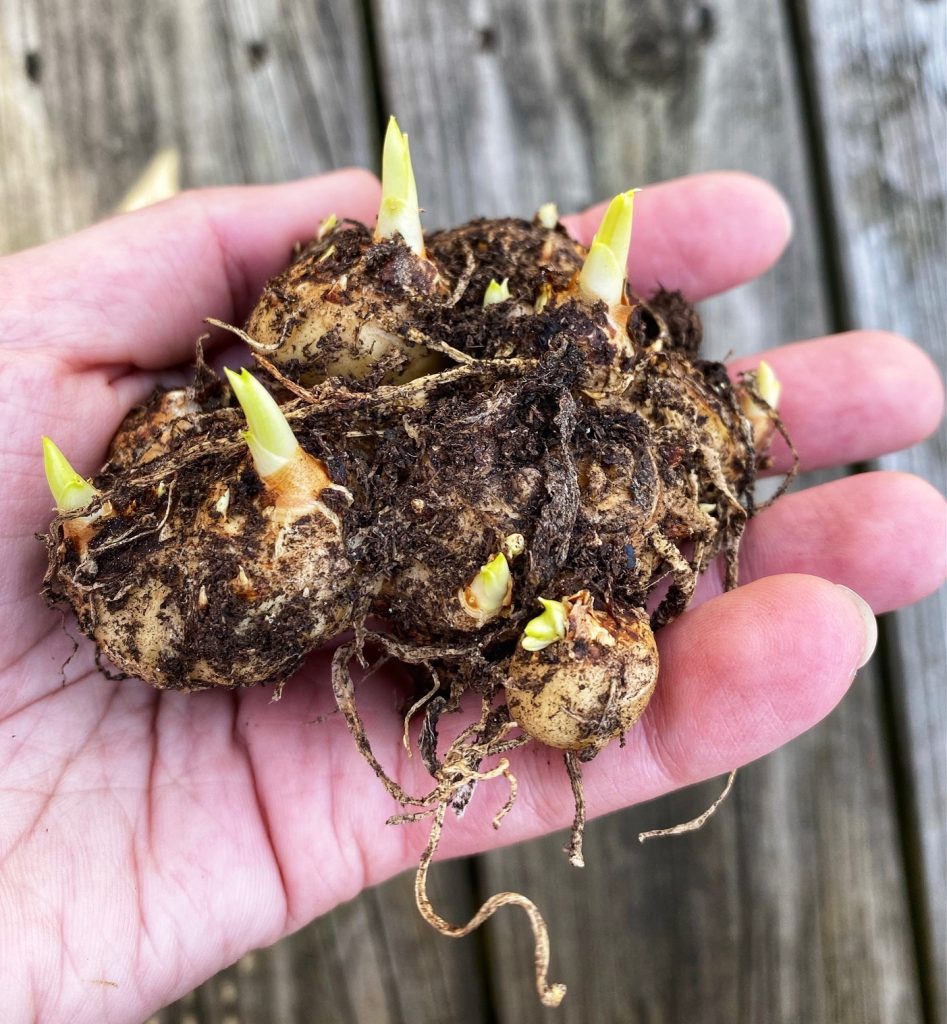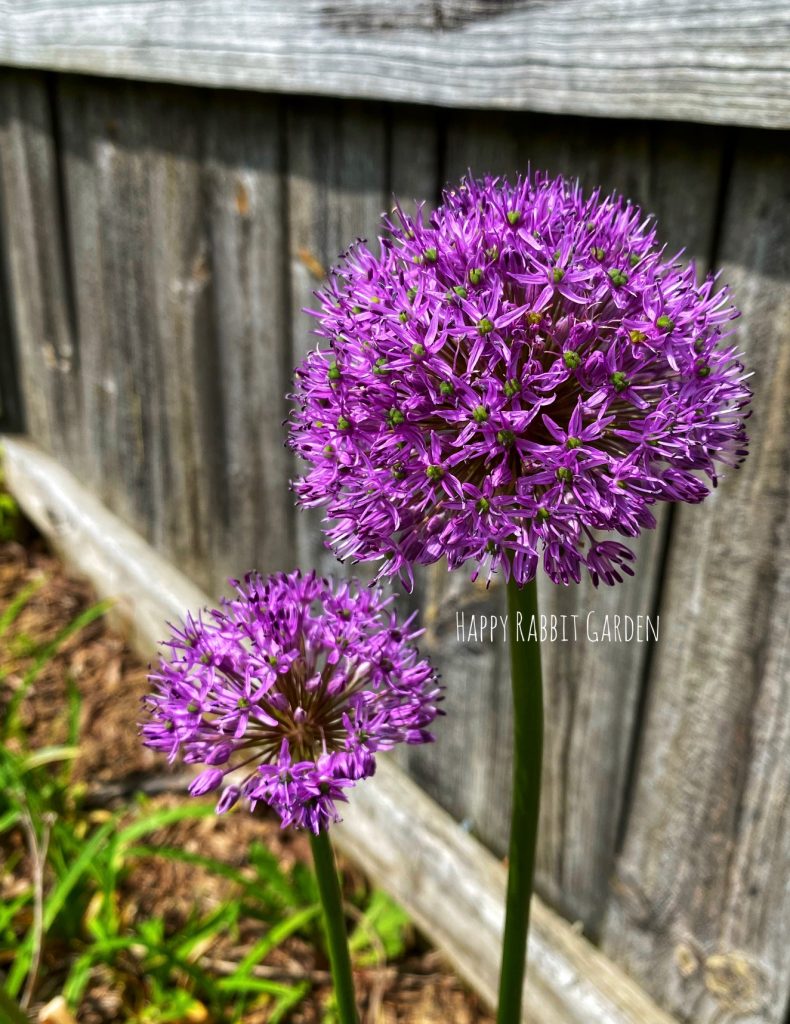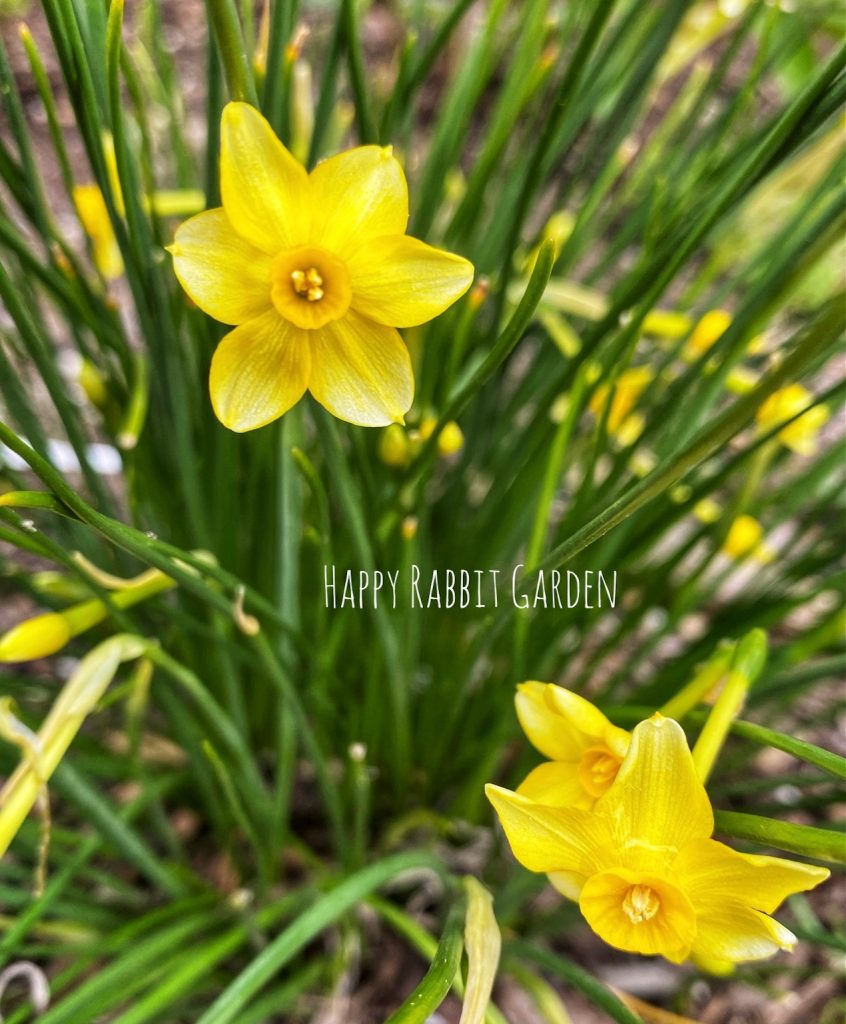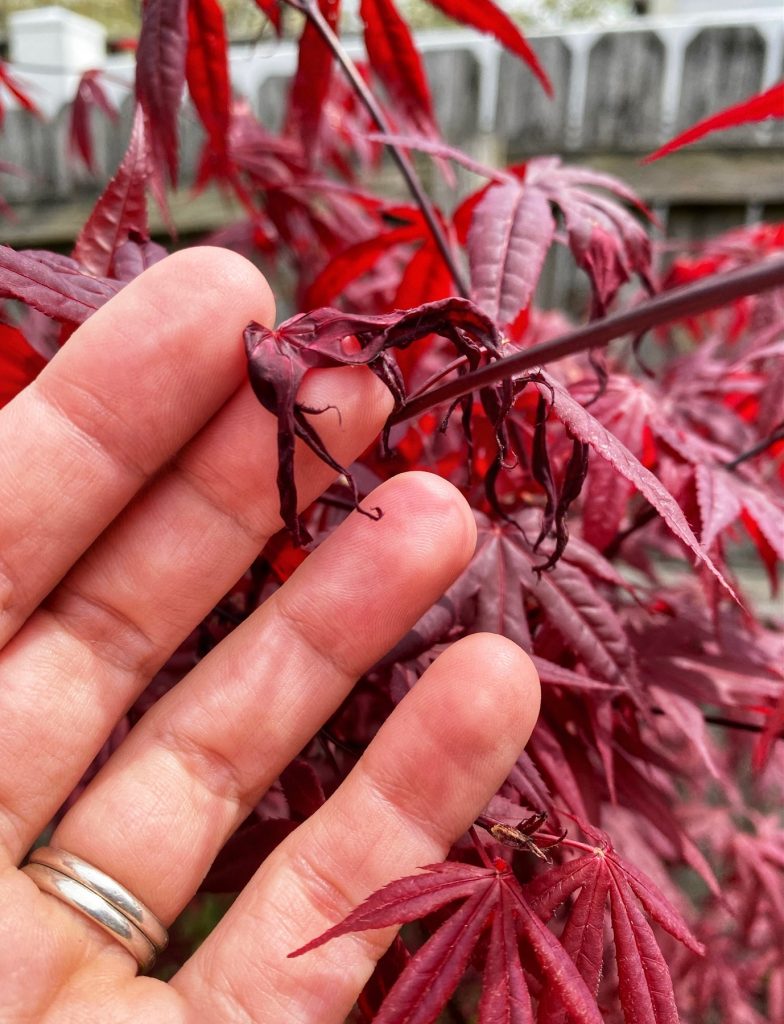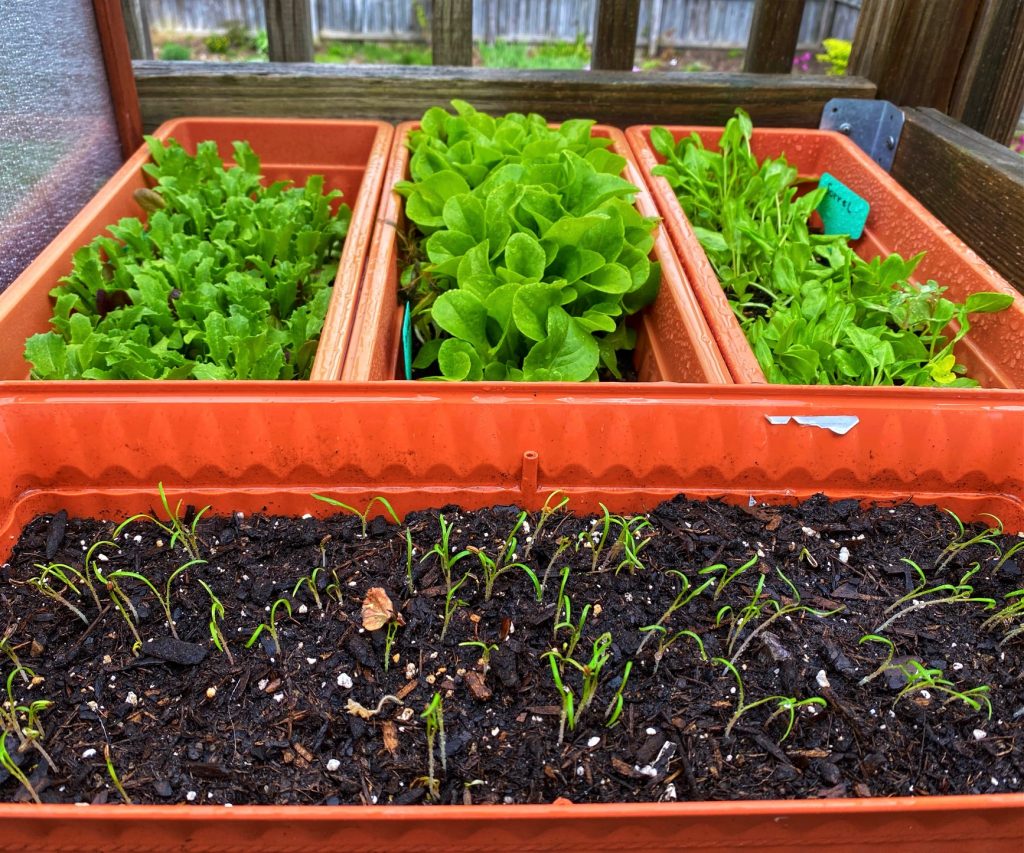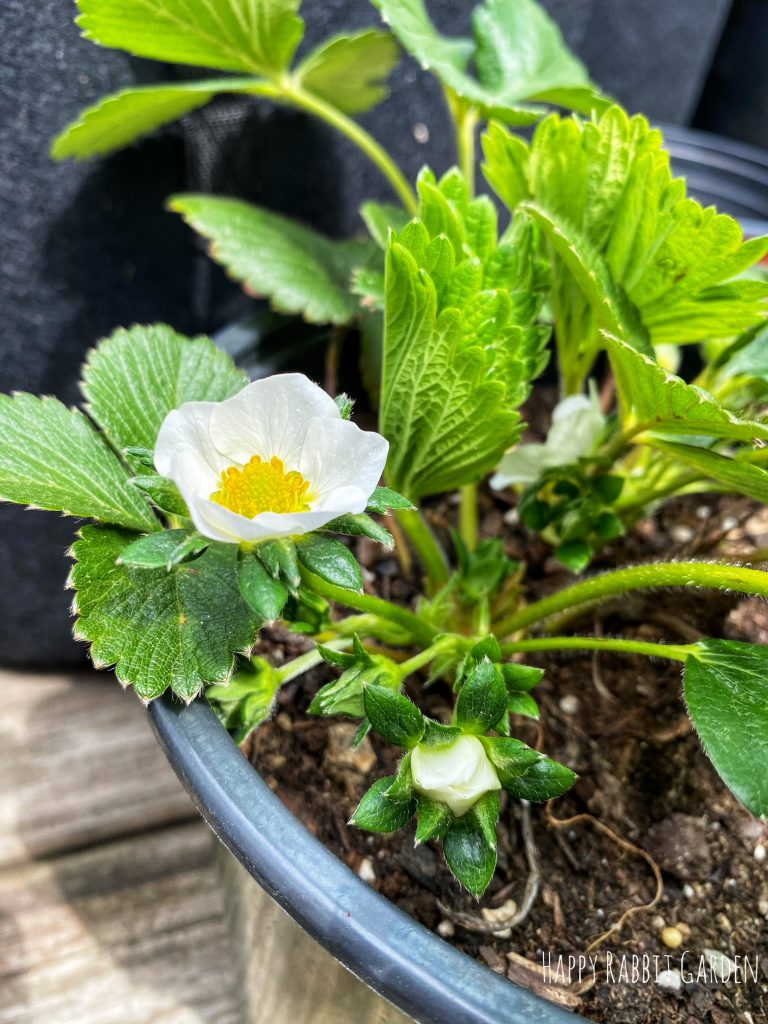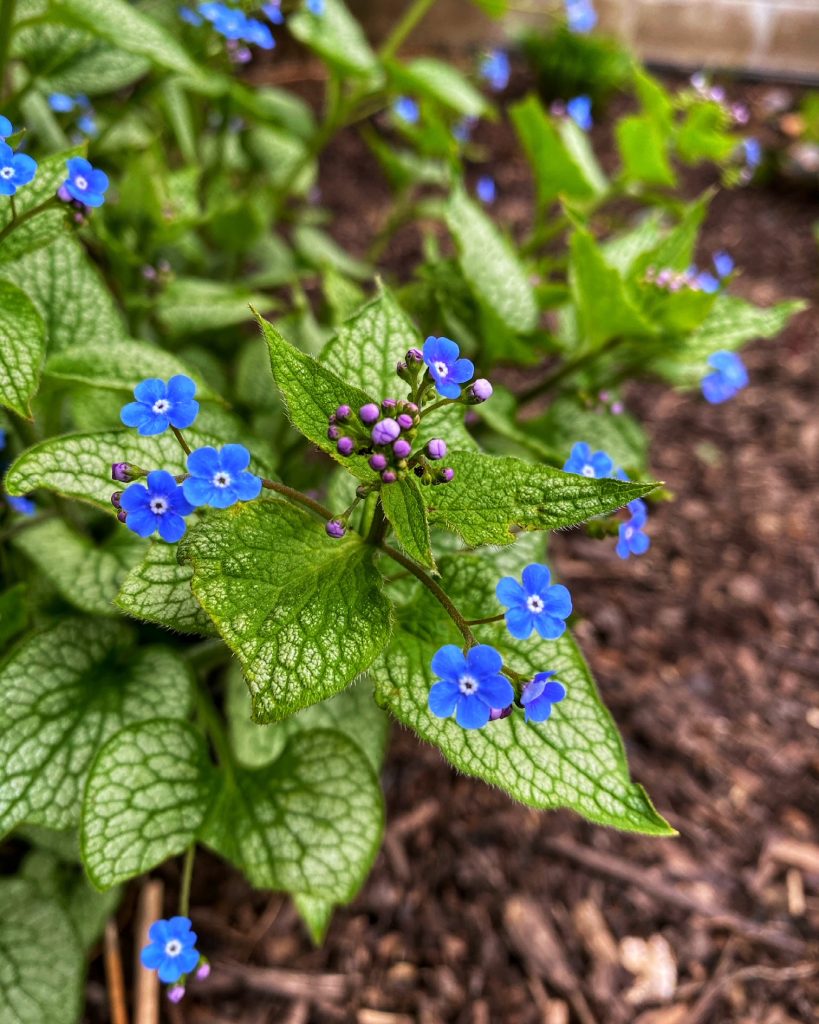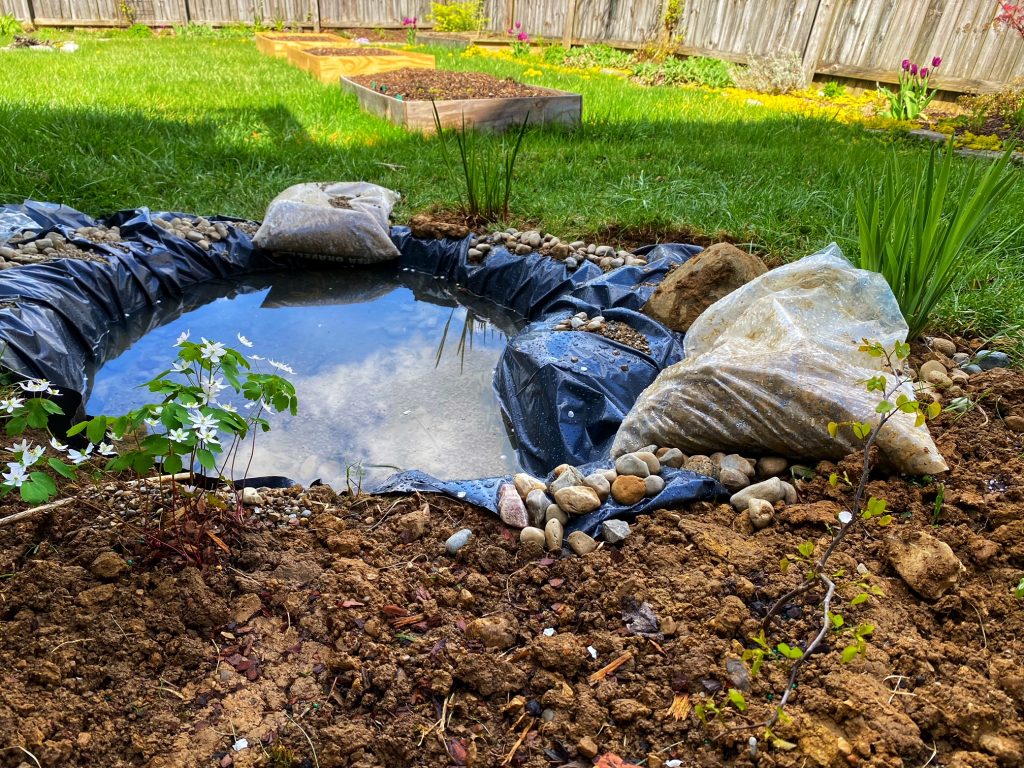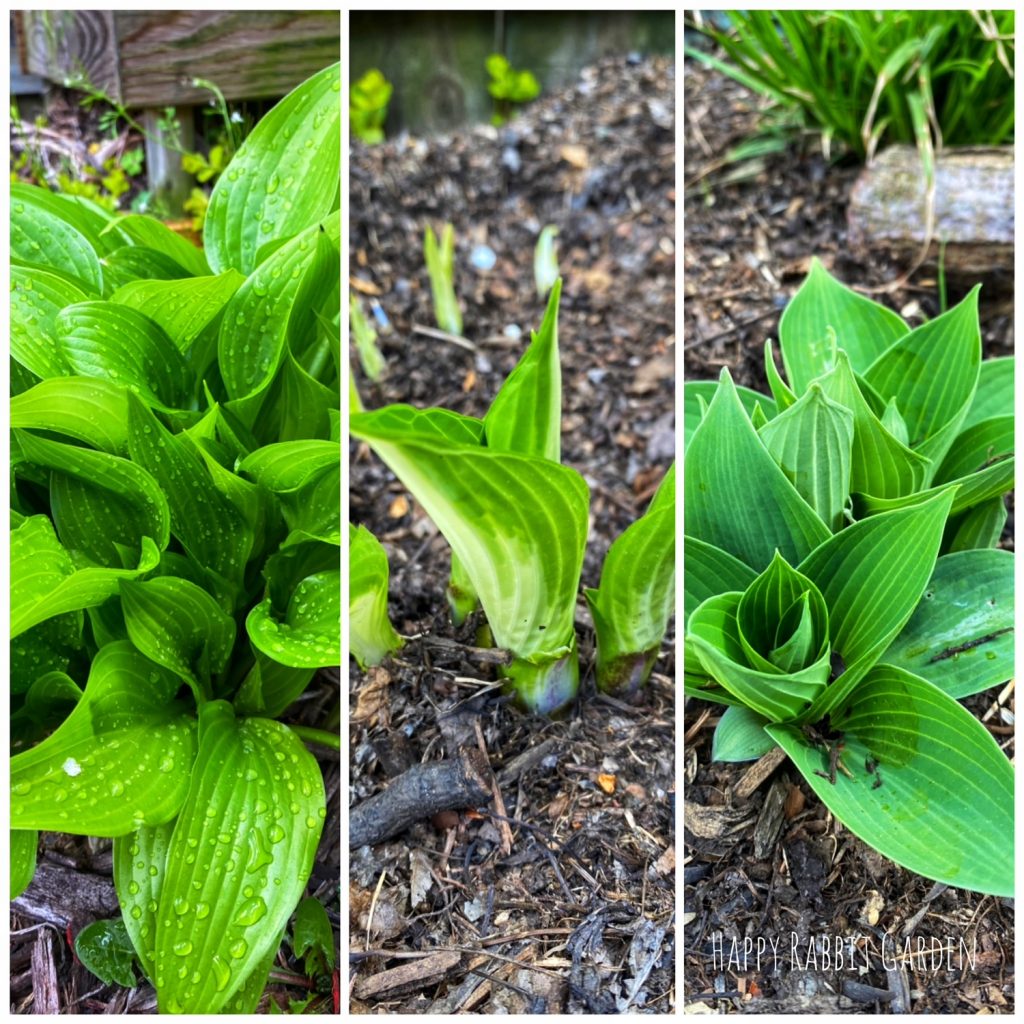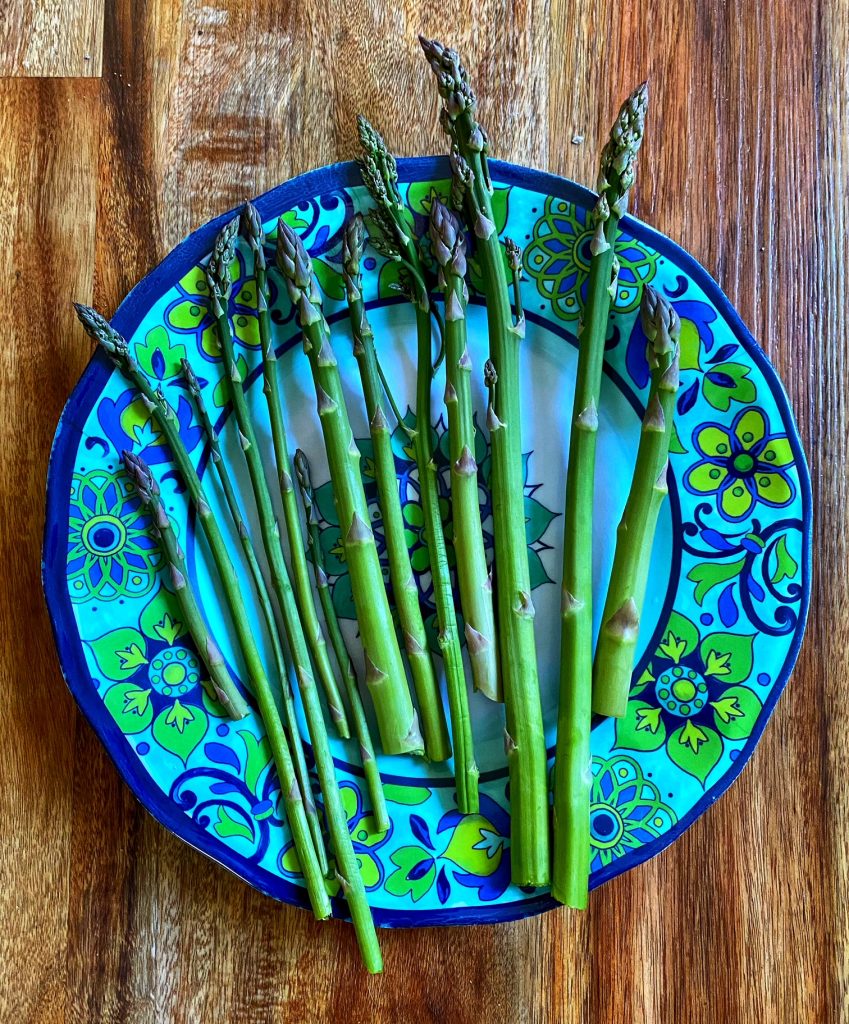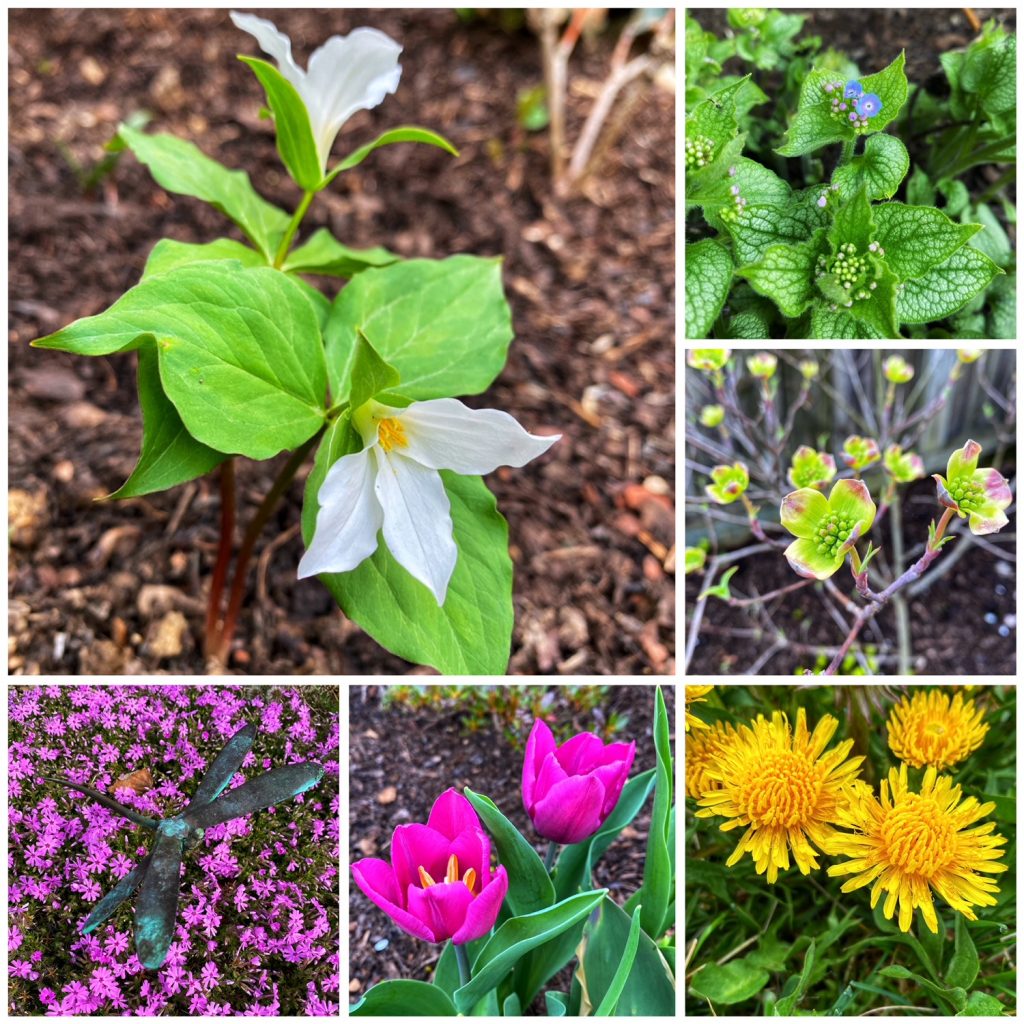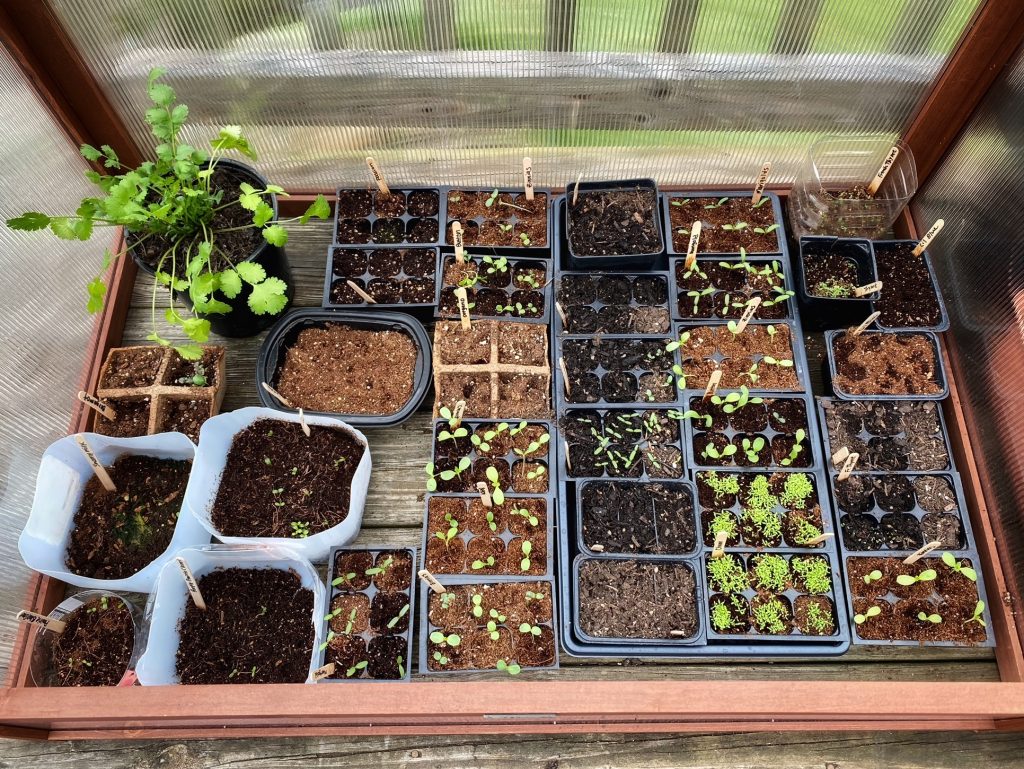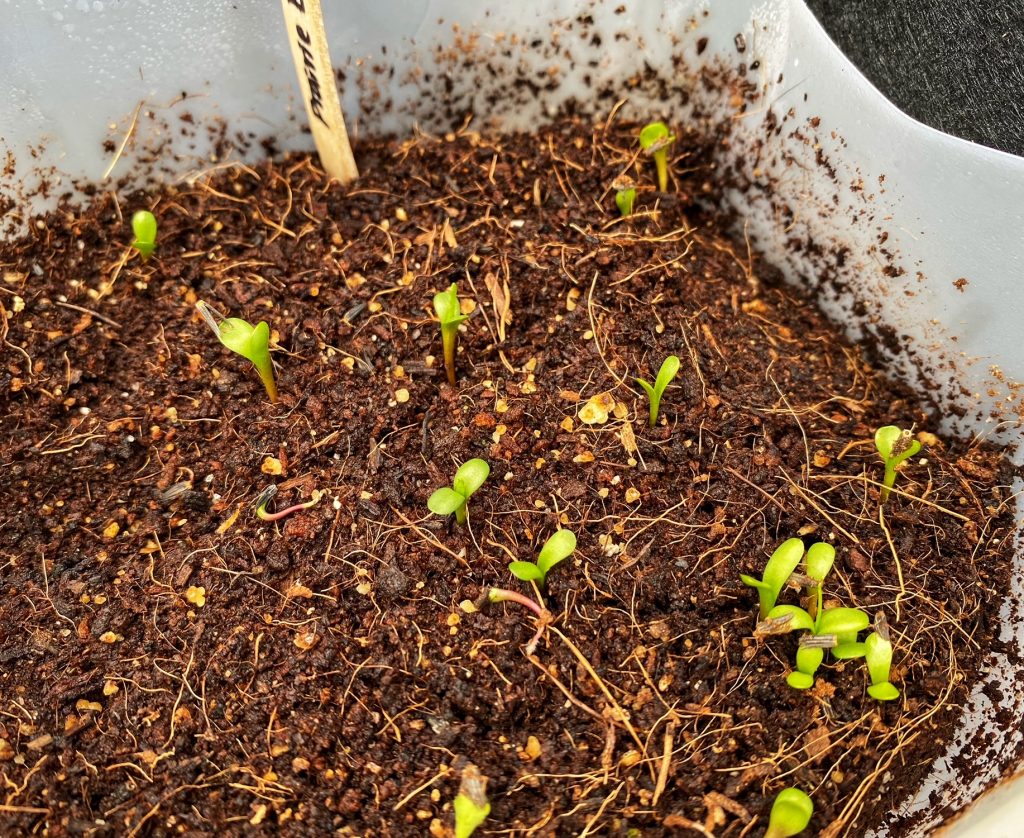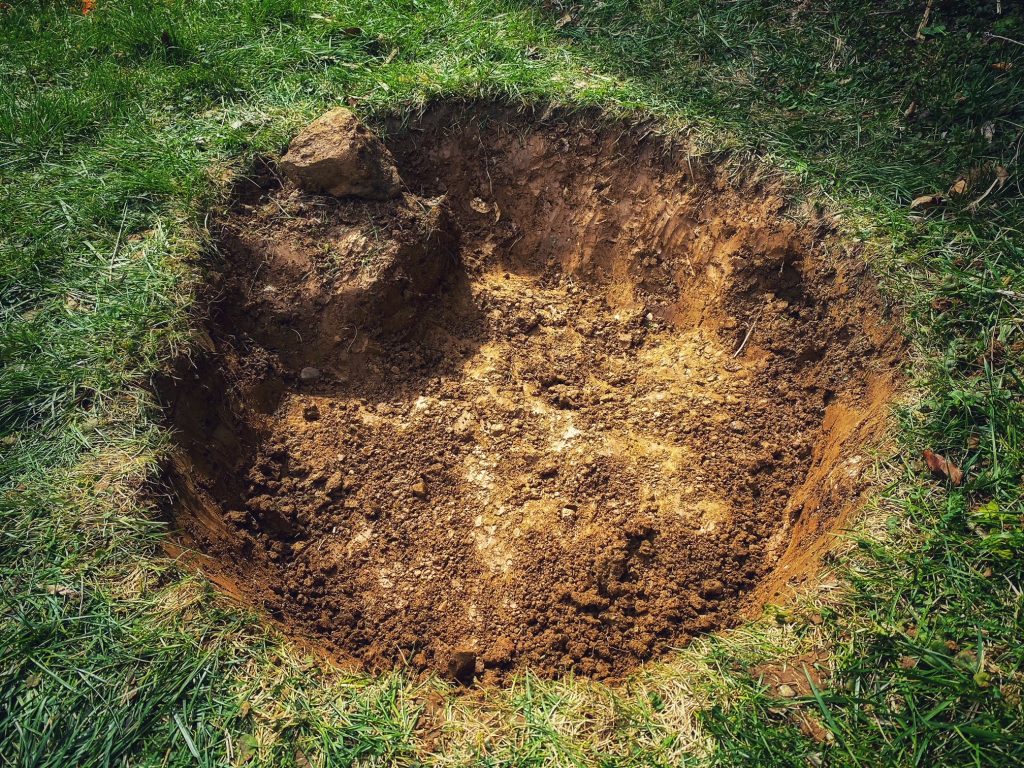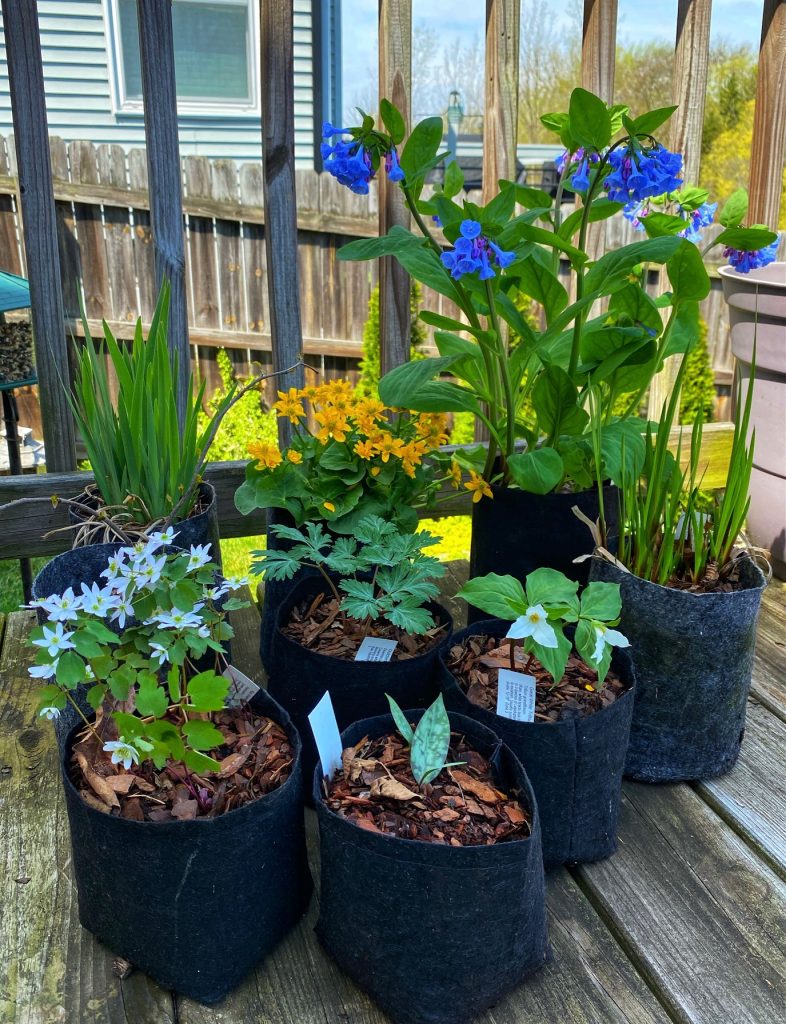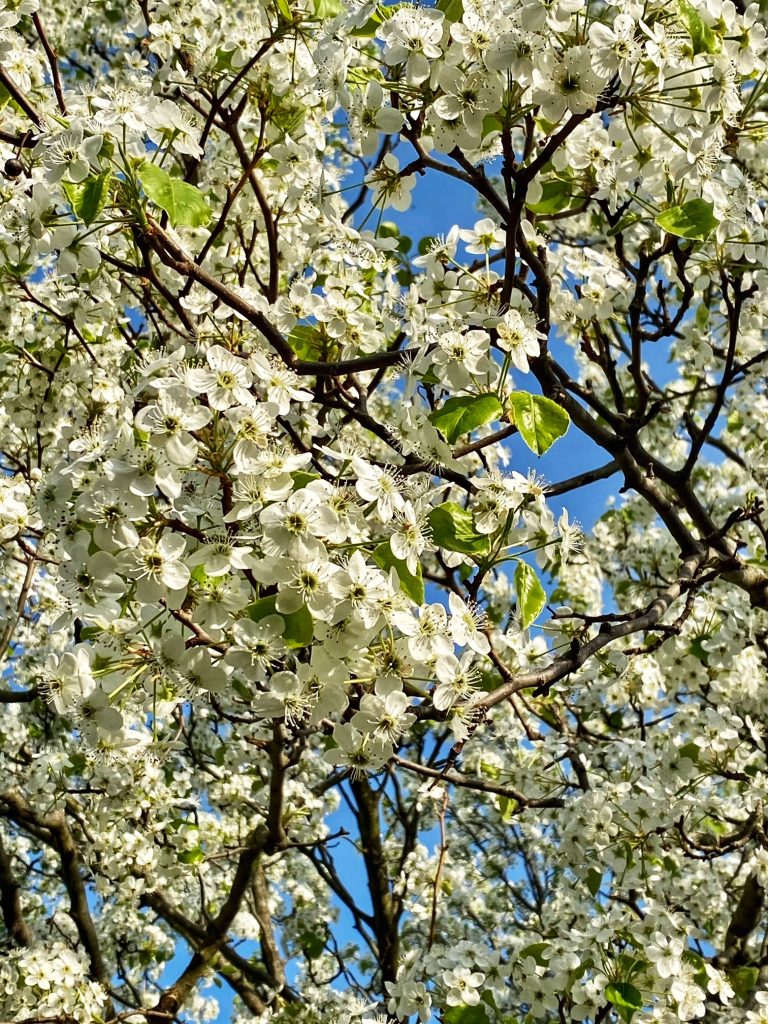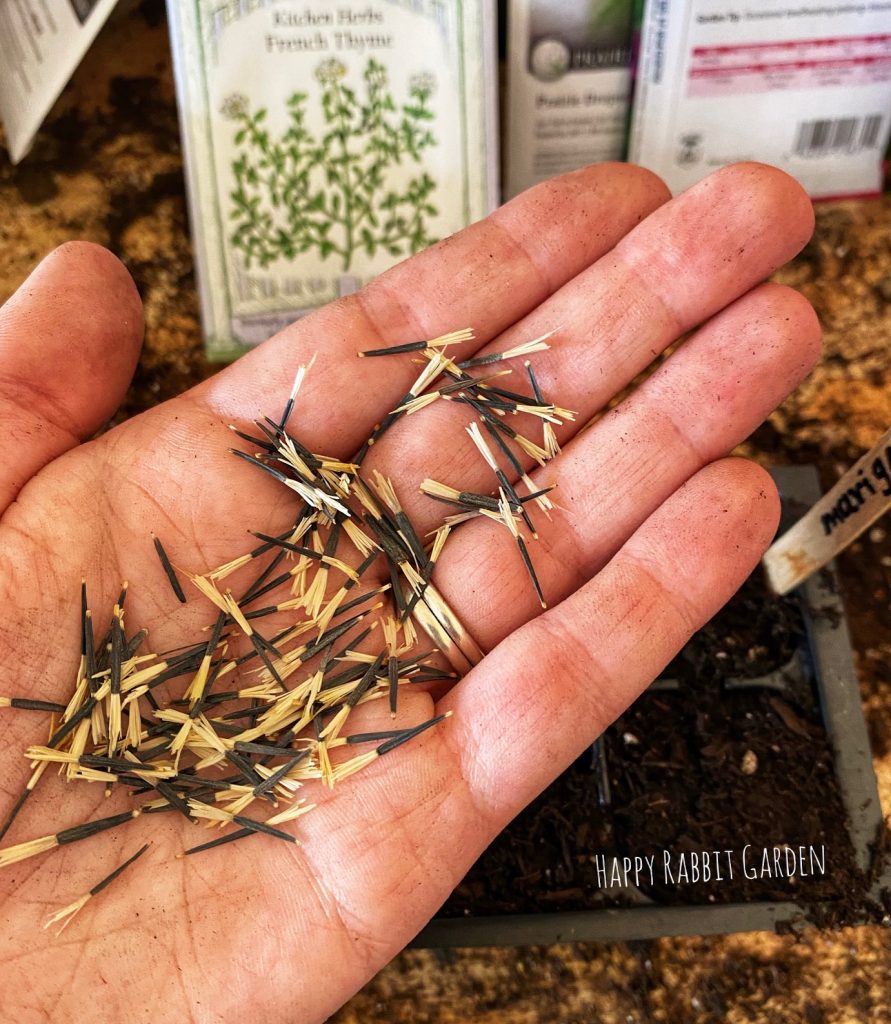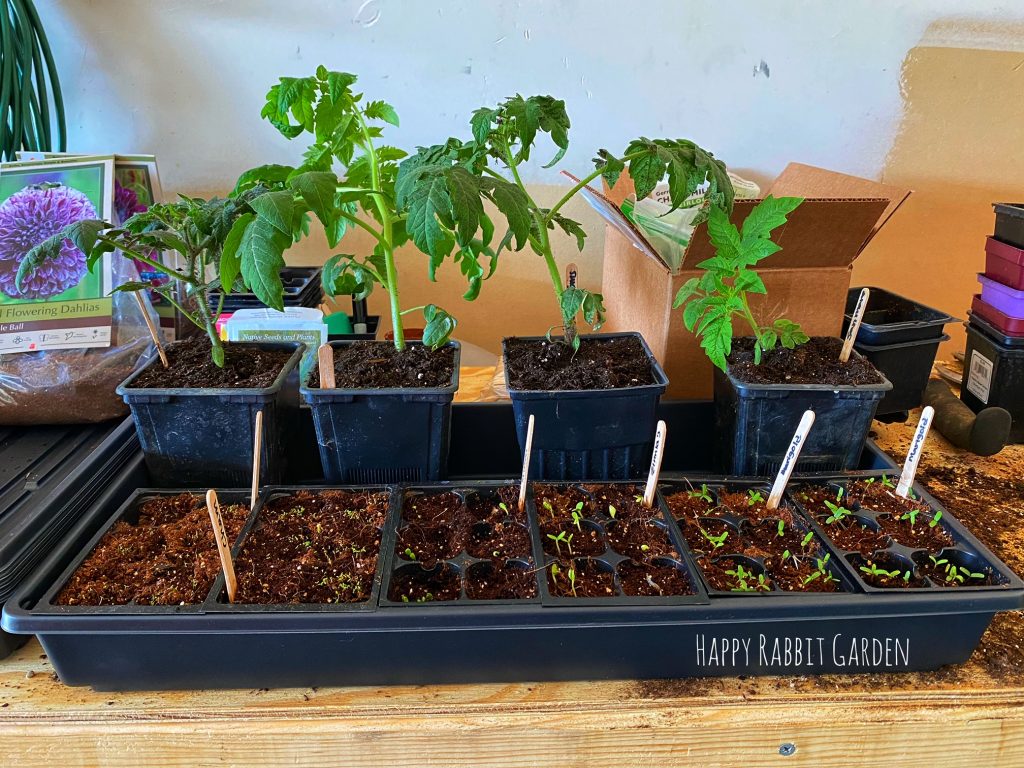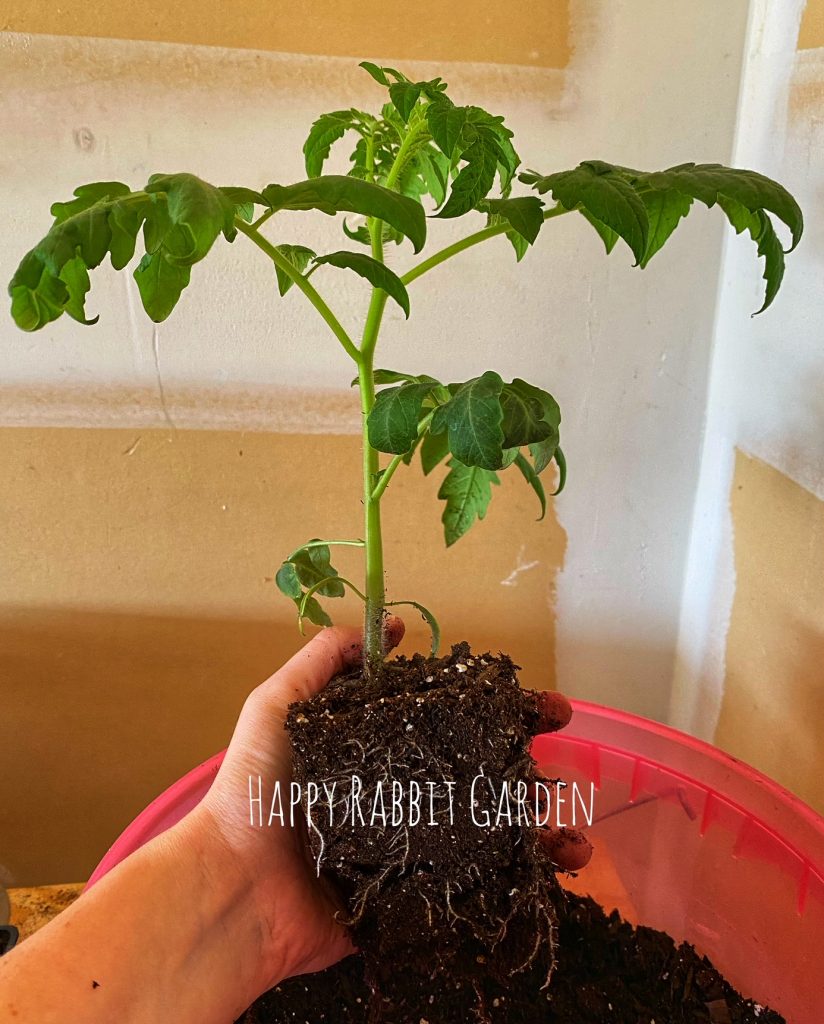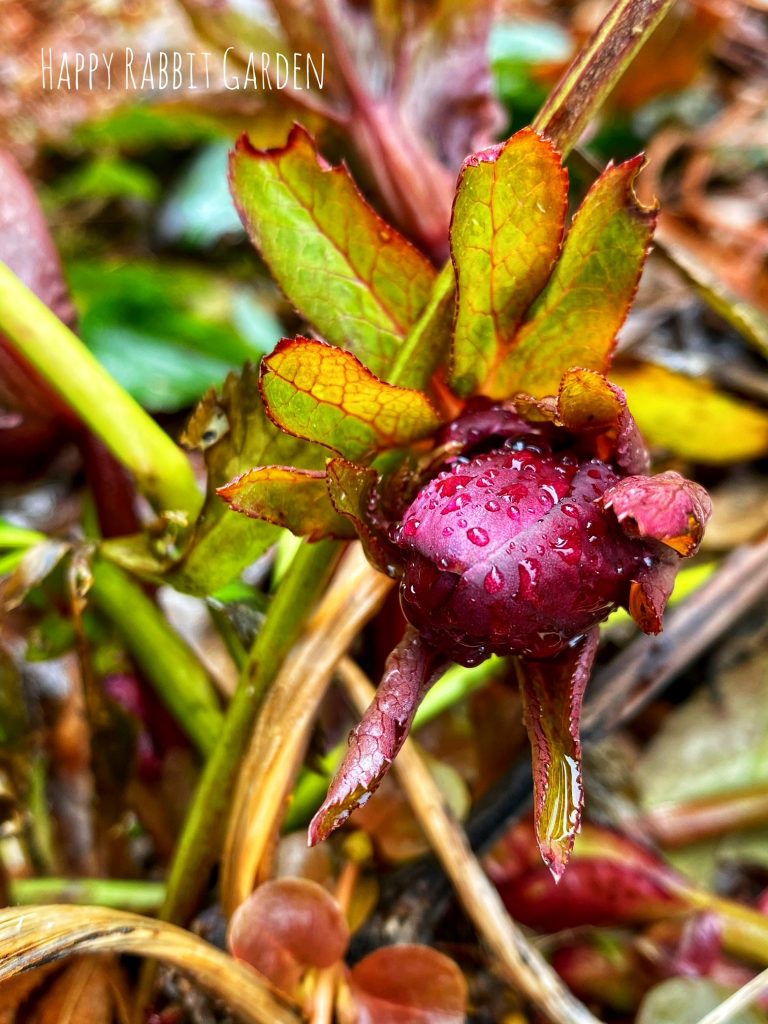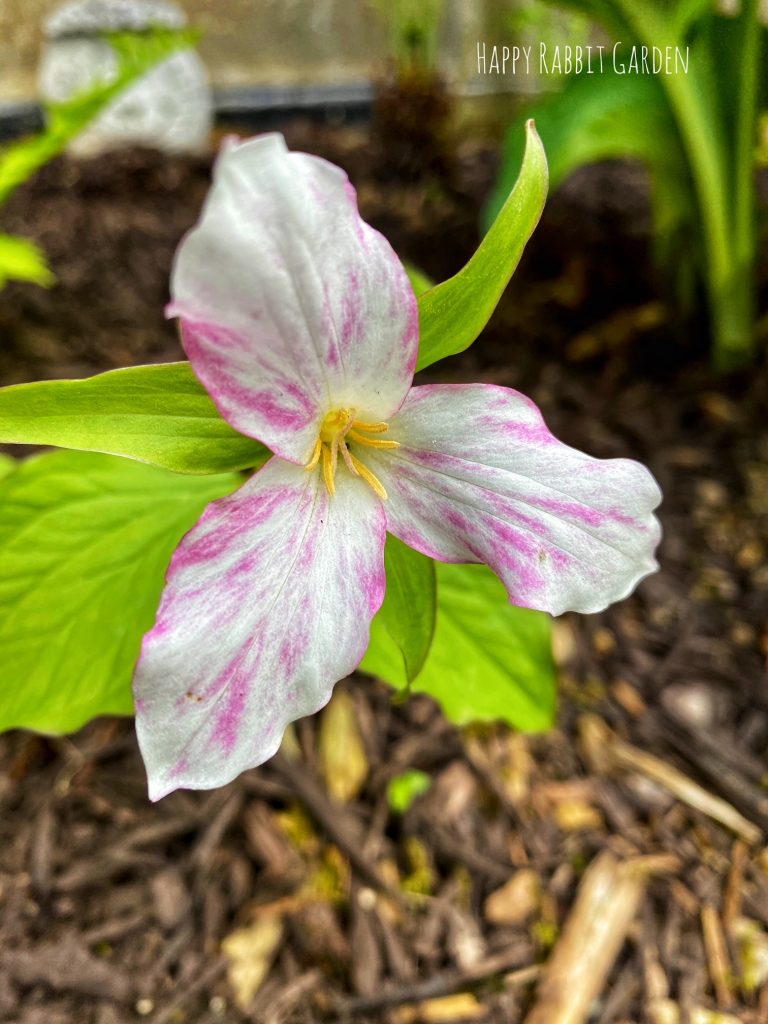
The calendula are starting to bloom!
We’re still a few weeks out from the official start to summer, but it feels like it’s already here. It’s been in the upper 80s most of the week, and humid. My annual Complaining That It’s Too Hot Outside portion of the year is definitely in full stride. In my defense, what is the point of weather that belongs in the Tropics without the benefit of that ocean view?
It’s been storming on and off, and the plants were treated to almost an inch of rain in the past few days, much to their delight. I haven’t had to water, so I am also pleased. Behind our house, in the woods, the Brood X cicadas are singing away, a sound that we usually don’t hear until August. Apparently, this group spent the past 17 years underground, only to pop up now. They only live for a few weeks after they emerge, but they make the most of their time, partying away looking for a mate, before they bite the dust. I found it interesting to learn that they don’t actually eat anything once above ground. The birds sure are enjoying their company, though. Cicadas are, apparently, fine dining, in addition to being very loud company.
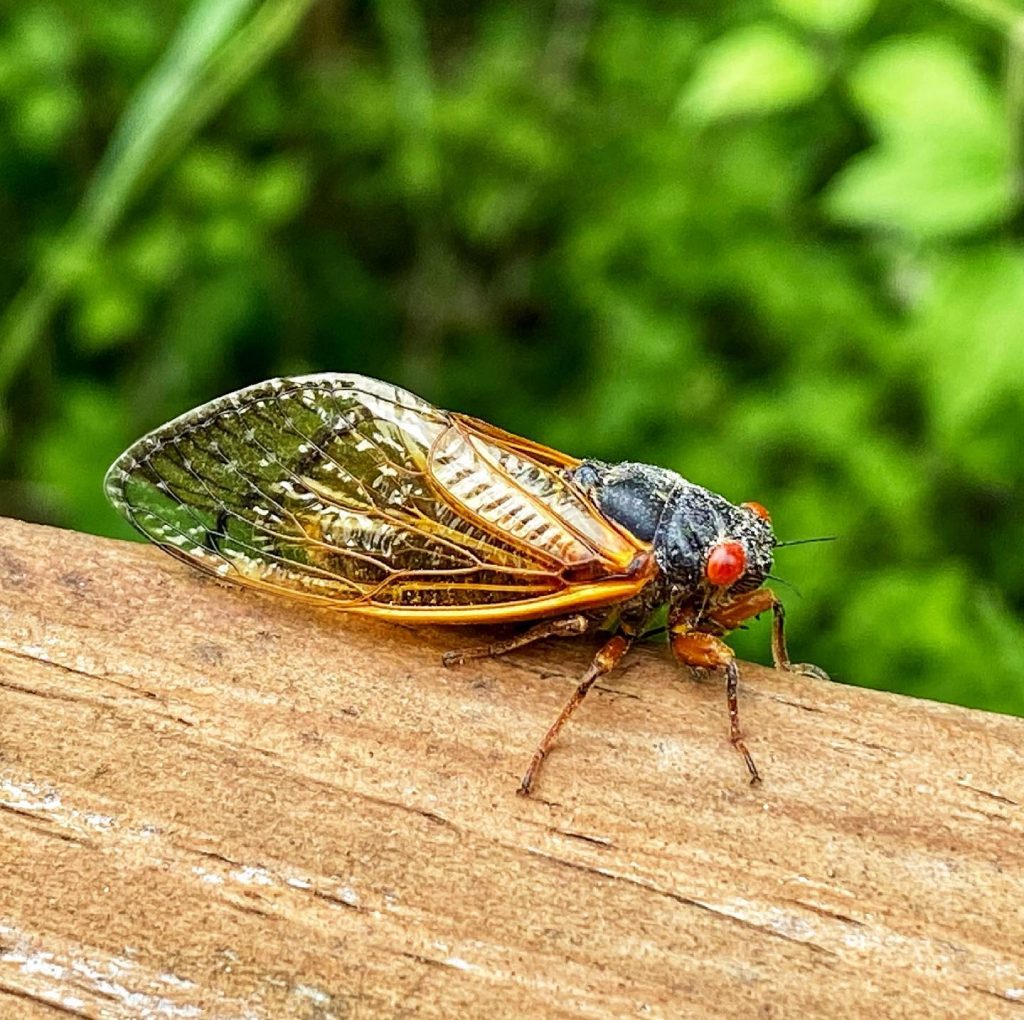
Hey there, pretty lady.
Back in our yard, the crops are all coming along well. The pumpkin seeds I planted the other week are beefing up quickly. I’ve thinned them out twice already, but I may pull up a few more of the seedlings to make sure the remaining sprouts have plenty of room to grow in their little spot on the deck. The pepper plants and beans are enjoying the heat and bushing out. Our tomatoes are also doing well. I’m planning to give everything some fertilizer this week, just to make sure we end up with as many great veggies as possible.
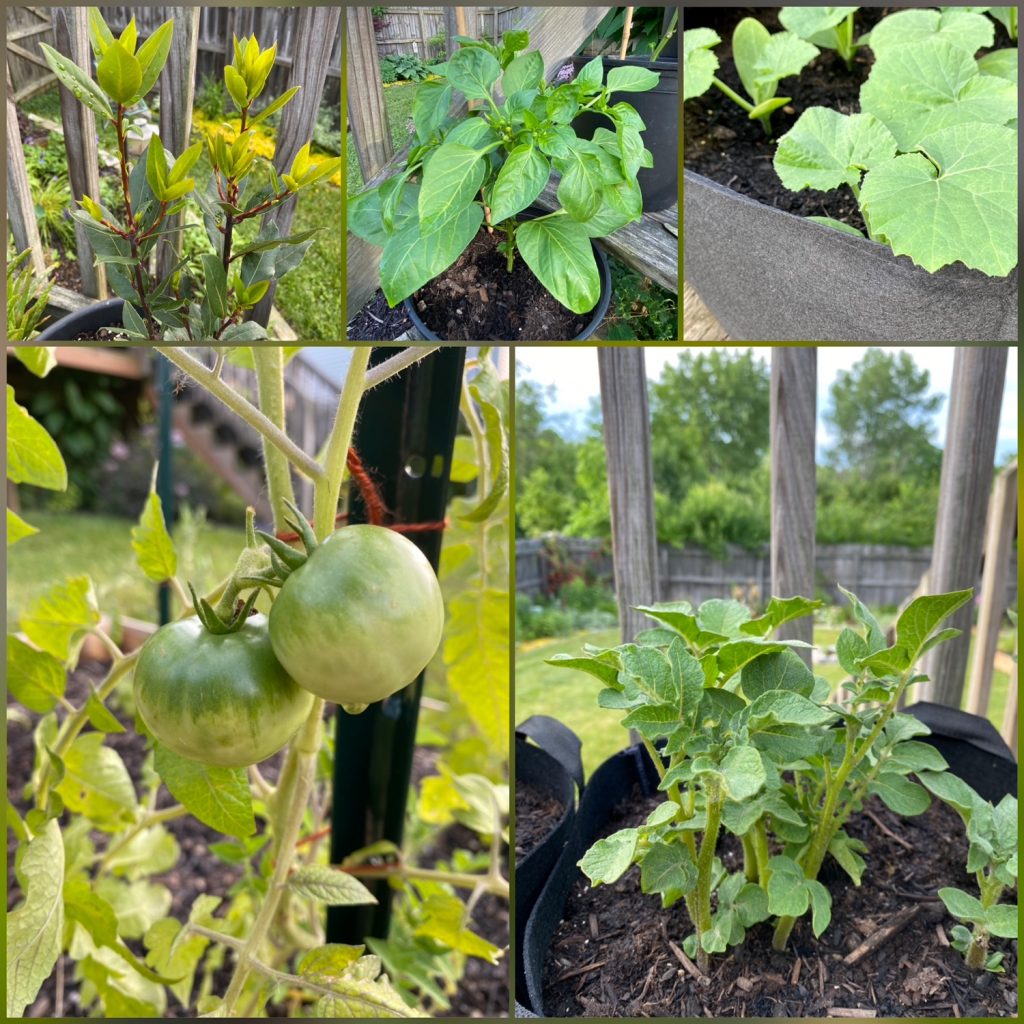
The bay laurel, peppers, sugar pie pumpkins, tomatoes, and potatoes are all enjoying the summer weather.
Over the weekend, on Saturday, I learned that it was National Prairie Day. As a kid, I remember many trips out to the park, where we’d walk through the trails in the prairies. I always preferred the woods. The tall grasses didn’t offer any shade, and I just didn’t notice the same magic that always seems to be lurking deep within the trees.
As time has passed, however, I’ve really grown to appreciate all that prairies have to offer. Much of the Midwest, where I’ve lived all my life, used to be covered in prairie. These areas were vital to the ecosystem, supporting thousands of species. Now, nearly 99% of those prairies have been destroyed, due to farming and other development. Many of the native plants and the wildlife that require them to survive have been lost, and we know those species that are still here, like the monarch butterflies, are struggling.
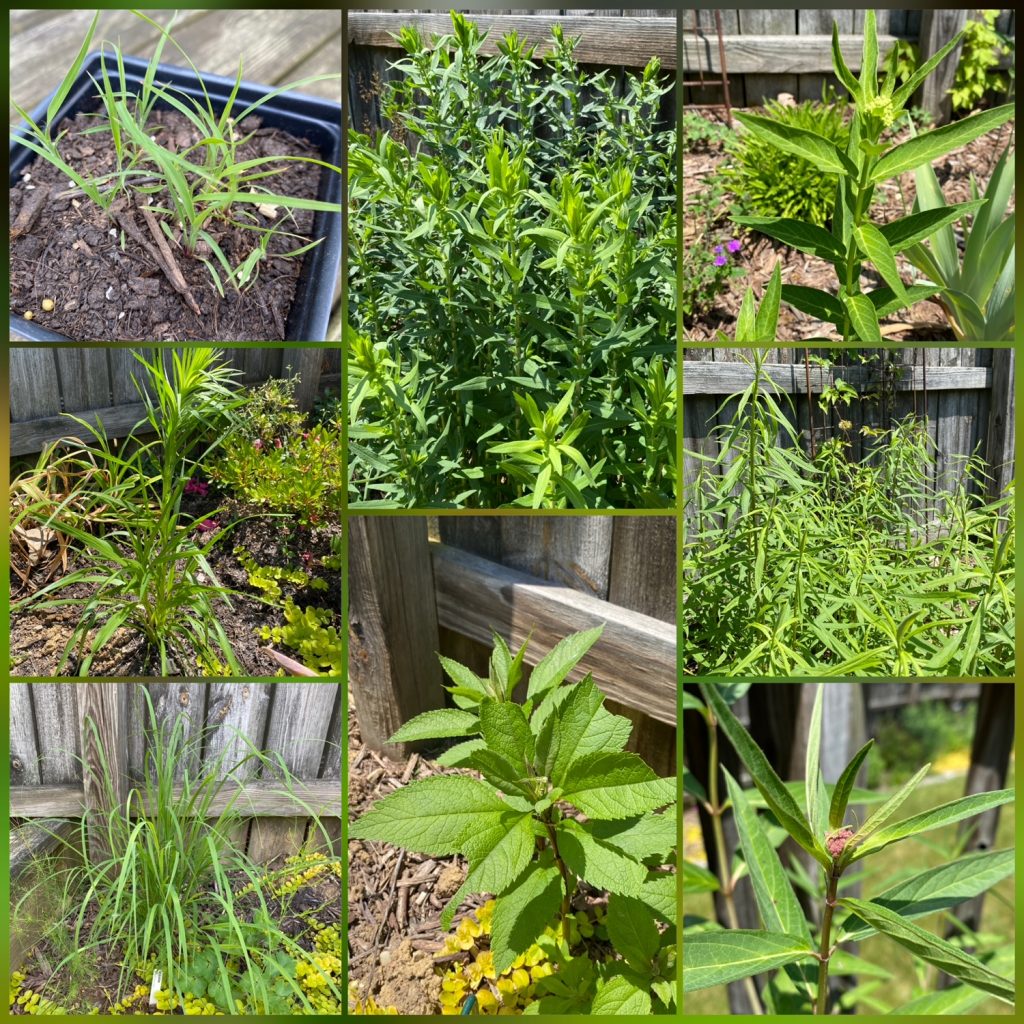
Some of our prairie plants: little bluestem, aster, butterfly weed, prairie blazing star, goldenrod, big bluestem, joe pye weed, and swamp milkweed.
The plants that once lived in these prairies are pretty fascinating, and adding them back into your own garden can go a long way towards helping provide spaces for wildlife. Many of these perennial plants are extremely hardy. You won’t have to replace them every few years after a hard winter. They thrive in the summer heat, and the bitter winter cold. Their roots grow extremely deep, unlike the grass in our lawns, and many of the other plants and bushes we add to our gardens. These deep roots help make the plants very drought tolerant. Even a few months after planting, I’ve never had to water my natives, like the milkweed, goldenrod, or aster.
Many of these prairie natives provide absolutely stunning color and shape to a garden, and they are rarely attacked by harmful insects. In fact, since planting more natives in our yard, I’ve noticed a severe decline in pests on our other plants. I don’t use any pesticides in the garden, and I absolutely attribute any success I’ve had growing veggies to their native plant neighbors. The natives draw in beneficial insects, which lure in more predators like dragonflies and birds that eat up the aphids and japanese beetles that used to devour my tomatoes and rose bushes. Planting native plants helps fit the, often missing, piece back into the ecosystem.
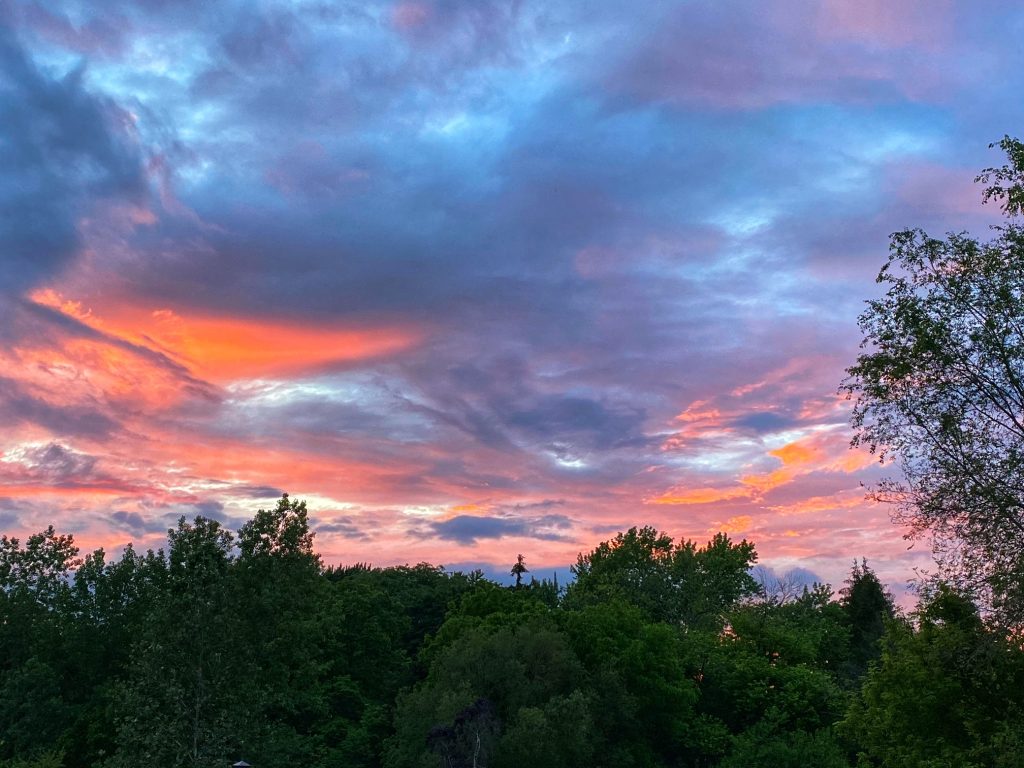
The summer storms always bring in really pretty sunsets!
For the past few years, I’ve been adding more and more native plants to our garden, with excellent results. Many of the prairie plants I have won’t bloom until later in the summer, but they are definitely bulking up now. I can’t wait to see this years joe pye weed and prairie blazingstar in bloom! We also grow a few native species of milkweed plants, and they are getting ready to start flowering here soon. While the monarch butterflies won’t arrive until the end of summer, the bees will absolutely be hopping all over the milkweek flowers. They smell absolutely amazing.
If you’re looking for something new for your yard, or even if you’re just interested in learning more, there’s lots of great resources out there. I highly recommend starting with the Native Plants Finder website or The Audubon Society‘s native plant database. Both sites allow you to type in your zip code, and you’ll find a wealth of information about what to plant.
Hope you have a great week in the garden!
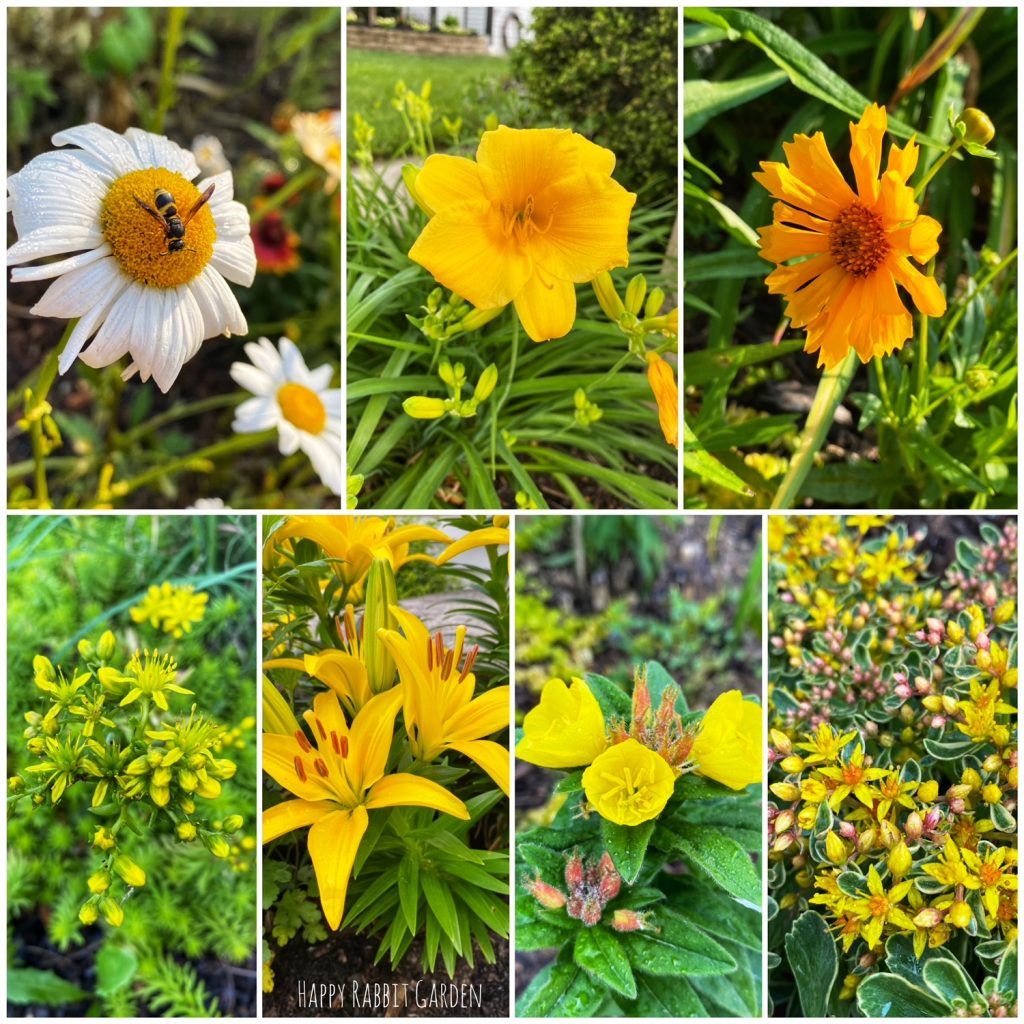
The golds of summer are in bloom! Our daisies, day lilies, tickseed, stonecrop, and buttercups are flowering.


